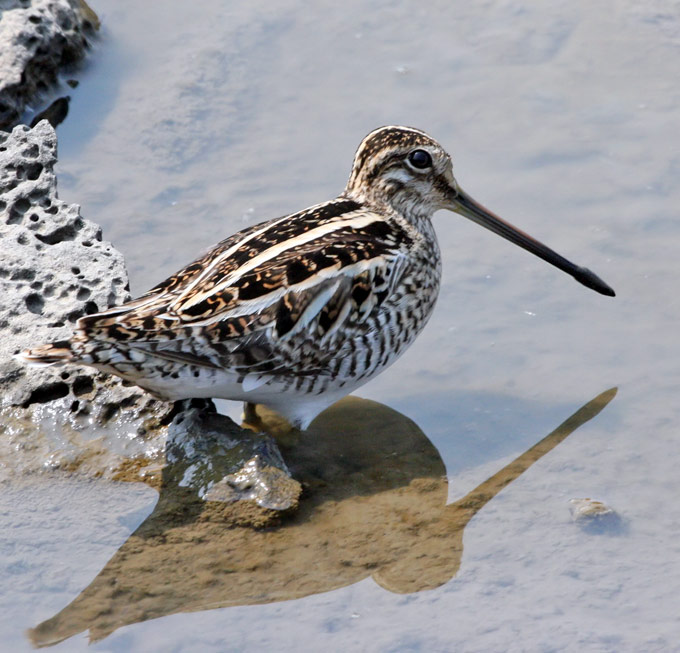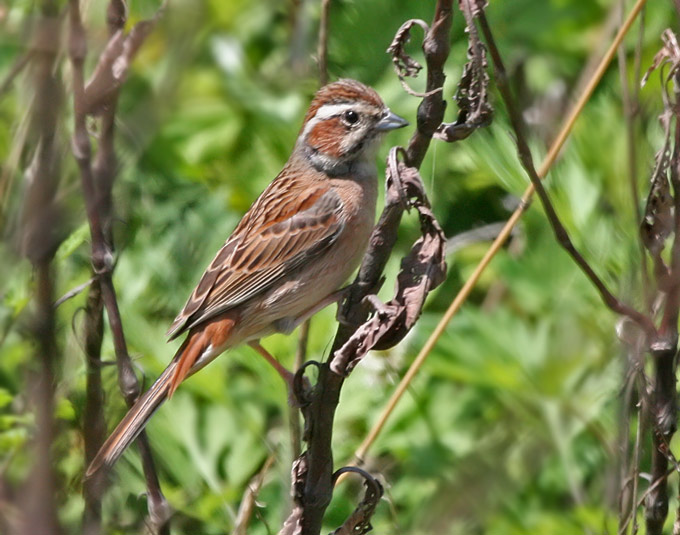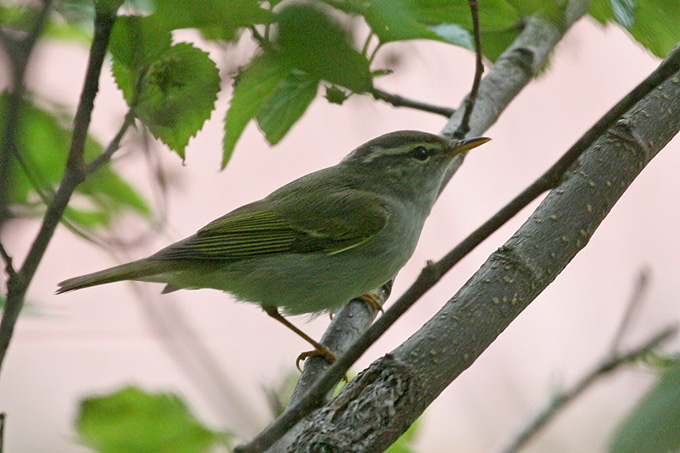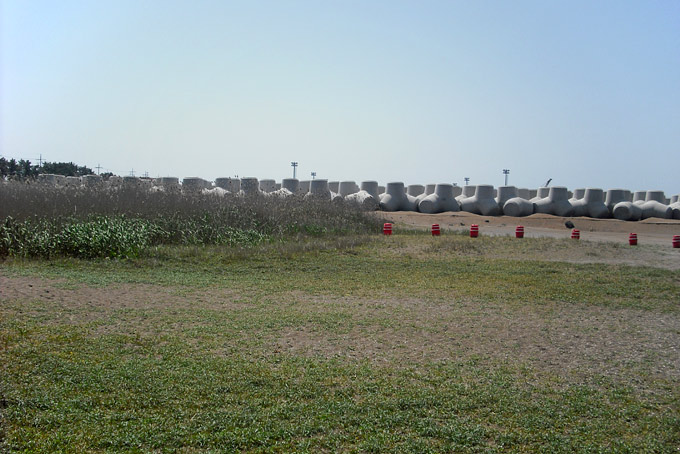 | E-mail to Birds Korea |
 | KWBS |
in the Region
 | The Oriental Bird Club |
 | BirdLife International (Asia) |
May
Like April, a great birding month. Temperatures begin to climb with day maxima often reaching 25°C by the end of the month, though feeling cooler on offshore islands due to low sea temperatures and wind. Fog can temporarily limit birding, while also causing spectacular falls of migrants.
Migration continues, and persity can be exceptional. Mongolian Plovers, Red-necked Stints, Broad-billed and Spoon-billed Sandpipers peak at the Geum Estuary, while Chestnut and Little Buntings outnumber Yellow-throated and Black-faced Buntings. Mugimakis, Dark-sided and Grey-streaked Flycatchers also start to arrive, often peaking in the second and third weeks of the month. Brown and Thick-billed Shrikes, Siberian Rubythroats and Broad-billed Rollers add colour and quality to the birding mix. By late May locustella warblers (Lanceolated, Pallas’s, Middendorff’s, Stayn’s and Gray’s Grasshopper) arrive on western islands. In forests Ruddy Kingfisher and very small numbers of Fairy Pitta are in territory and vocal, though still elusive and easily disturbed. Korean breeding Chinese Egrets and Black-faced Spoonbills remain widespread at the best sites, and Saunders’s Gull have also nested in Gyeonggi Bay annually or near-annually since at least 1999.
In recent years May has produced several sightings of national rarities like Common Chiffchaff, Band-bellied Crake, Black-winged Cuckoo-shrike, Cinnamon Bittern and Red-headed Bunting. "Korean firsts" in May have included Asian Drongo-cuckoo, Hill Blue Flycatcher, Spotted Dove and House Sparrow in 2006, and Large Hawk-cuckoo and Yellow-streaked Warbler on Socheong Island in 2007.
(The following records are a compilation of our own sightings and records sent in by other observers. As well as being posted on the Birds Korea website(s), selected records are also forwarded to other Korean-language birding websites; records of threatened species are arranged and forwarded to Birdlife International and national authorities when appropriate; flag images and records are passed to bodies responsible for their coordination throughout the flyway; and all records sent to us are used to compile annual reports and to support the evolving understanding of the status of many of Korea’s birds.)
Socheong Island, May 31
With a shift in the wind to southeast and bright sunshine, a surprisingly excellent day and survey of the west of the island found 80 species in the west of the island. The first highlight came with good but brief views of a female Black Paradise Flycatcher on North Point, with in the same tree another (either Black or less likely Asian) only glimpsed. While waiting for these to reappear, a Black-winged Cuckooshrike flew over, and landed nearby where it fed for five or ten minutes before being lost to sight and sound. However, very best for the day came in the late afternoon when an Orange-headed Thrush was found by the stream in second village. Fortunately, after an initial two-second view when it was first seen disappearing into dense cover, the bird reappeared, showing long enough for some record digiscope images and even for TE to twitch it…This is believed to be only the second national record, with the first found and photographed by Kim Sung-Hyun on Hong Island on May 8th 2004.

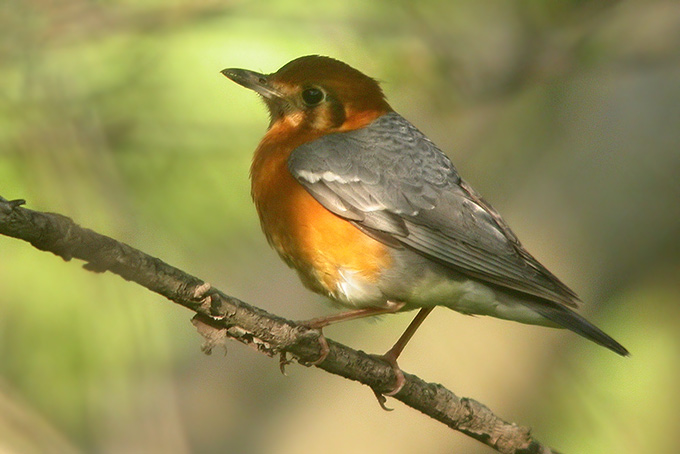
Socheong Island, May 30 & 31
Overcast and dark with a little light rain. Selected highlights included for example another Siberian Bush Warbler heard at close range: 10 Chinese Bulbul in a single tree: a nice look at a resting Grey Nightjar: and continued views of e.g. several Thick-billed Tiger Shrike, Middendorff's, Gray's, Lanceolated and Pallas's Grasshopper Warblers, Two-barred & Thick-billed Warblers, Northern Hawk Cuckoo and especially plentiful today, Black-browed Reed Warbler- all species that are otherwise scarce or difficult to find on the mainland.
On the 31st, I was lucky to find the very elusive and difficult Japanese Night Heron : later I managed to see an Orange-headed Thrush found by N.M.- only the second Korean record. Also finding its way into my lens today, a Dollarbird, Mongolian Gull, Eastern Cattle Egret and Gray's Grasshopper Warbler. Asian Brown Flycatchers have started to darken on the breast, which they do by late spring.
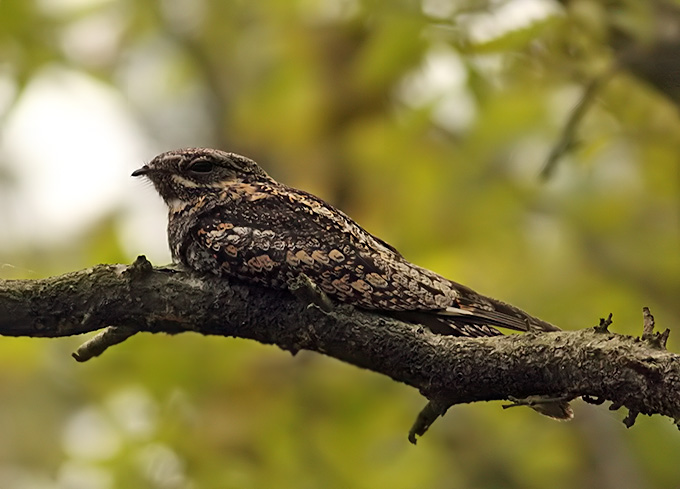
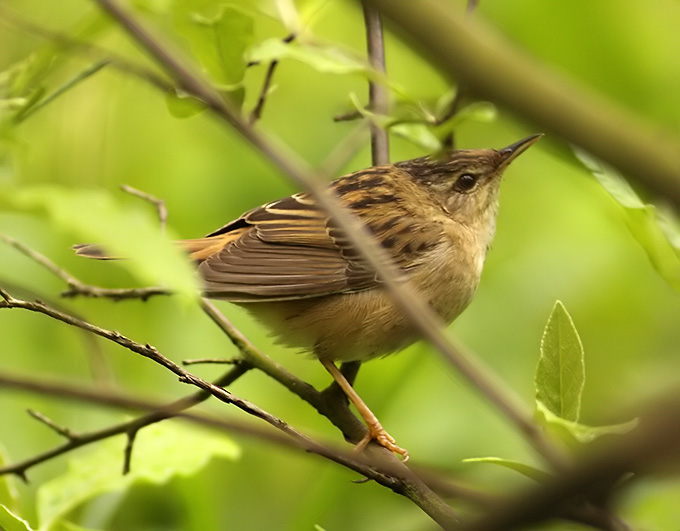
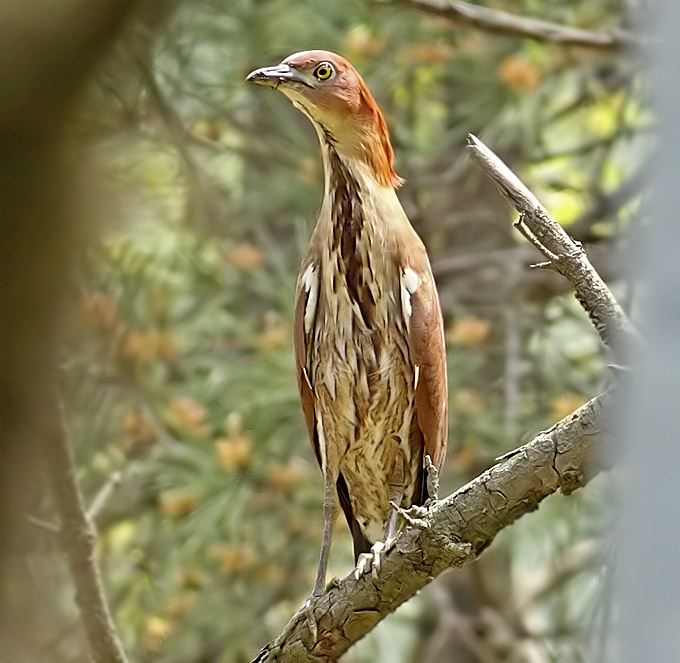
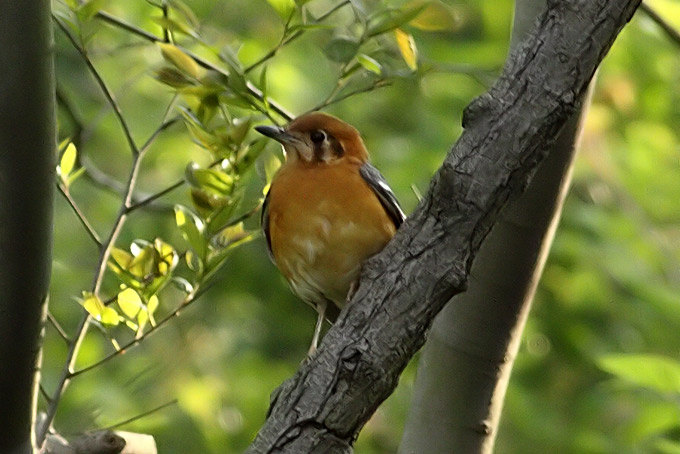
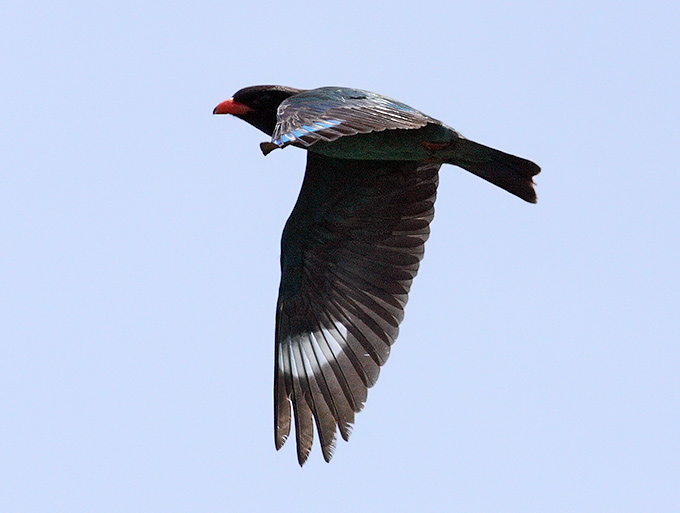

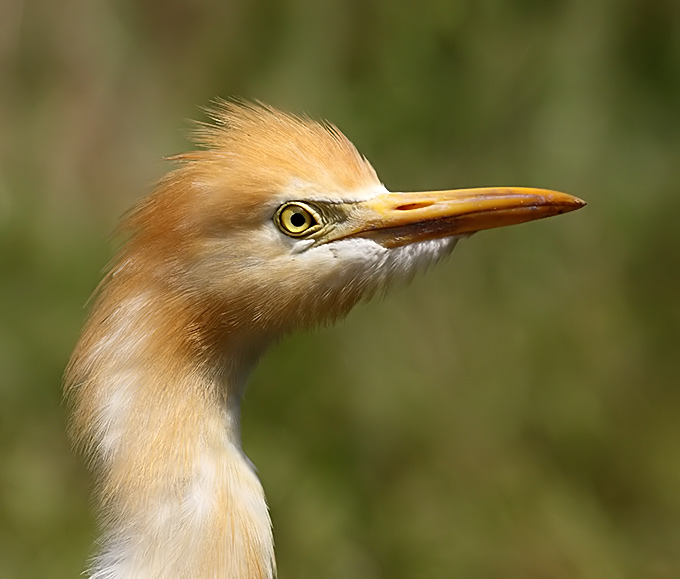
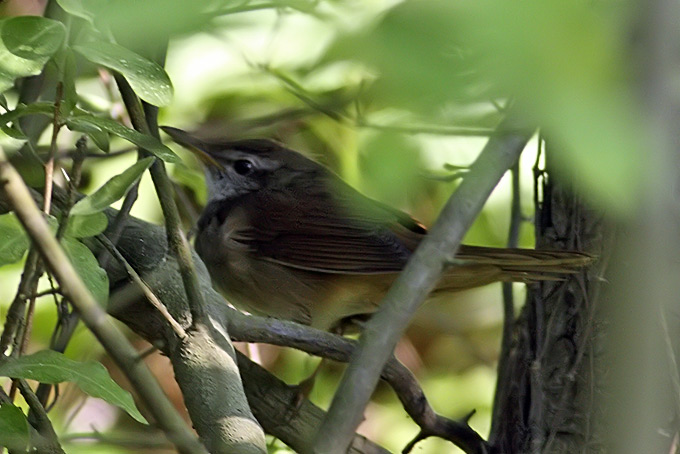
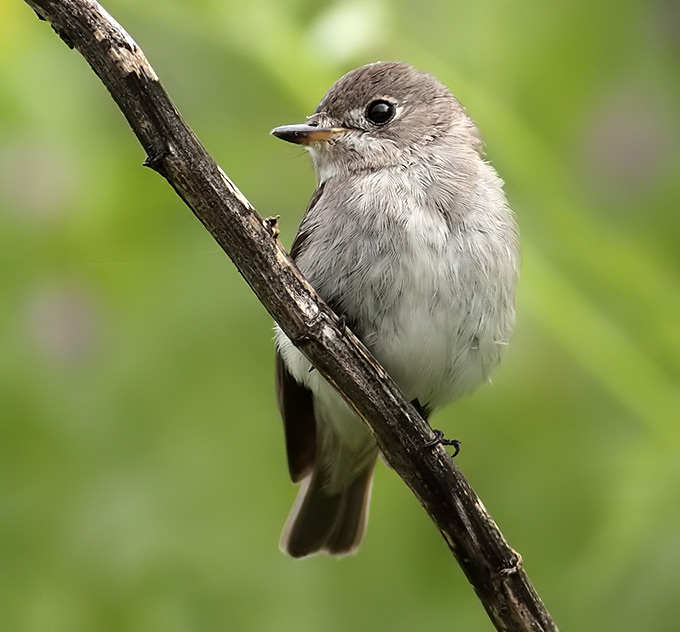
Socheong Island, May 30
Heavy overcast and light rain showers failed to develop into the forecast heavy rain, and survey of the west of the island in the afternoon found presumably fresh-in (and sitting in the open) Grey Nightjar, 24 Thick-billed Warbler and what is presumed to be an amnicola Gray’s Grasshopper Warbler (appearing e.g. very warm-toned, Radde’s Warbler like, on the vent and the underparts).
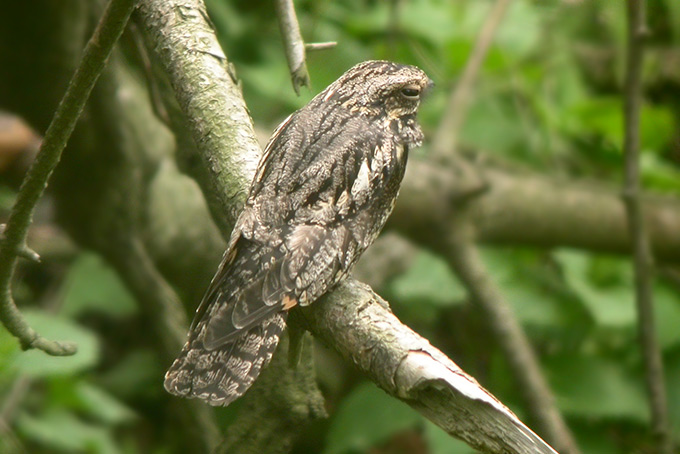
Socheong Island, May 29
Continuing survey of the whole island for the Birds Korea Blueprint ahead of forecast rain found 87 species (with the addition of a Fairy Pitta found and photographed by TE). Species of note included the Japanese Night Heron (after a week of invisibility), a Yellow-legged Buttonquail, a Watercock, 25 Tiger Shrike, a surprisingly good second peak in number of Yellow-rumped Flycatcher (39), a first peak in Arctic Warbler (131 counted) and what is believed to be three Siberian / Baikal Bush Warbler (with one singing invisibly at the lighthouse, another flushed in “Black Goat”, and one watched singing by TE on the main ridge). Highlight of the day, for NM at least, was a Collared Dove well seen in Fish-farm – presumably the same individual that was found on the 19th, only to be lost into the fog within seconds, not to be seen again (until today!).
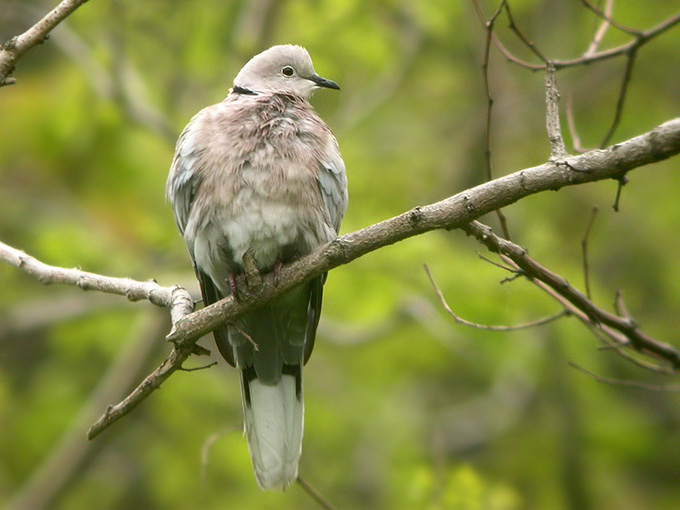
Socheong Island, May 28 & 29
The 28th brought overcast conditions with mist billowing in from the south-east. I enjoyed close views of 6 Gray's Grasshopper Warbler (including two singing), a Middendorff's Grasshopper Warbler, a Lanceolated Grasshopper Warbler and 2 glimpses of Pallas's Grasshopper Warbler (-which is to my mind the most grasshopper-like, as it springs from your feet to flutter down a few yards away).
On the 29th, 89 species on the island: best were reasonable views of a Collared Dove found by N.M. an hour earlier. Even rarer, close glimpses of a Siberian Bush Warbler, uttering a three-note rasping cricket-like sequence from a low shrub along the hill ridge. Probably the same individual seen in the vicinity ten minutes later was noted to wag its cocked tail slowly up and down- a characteristic feature perhaps?. Scouting the same spot in late afternoon would you believe turned up that most elusive and vividly colourful of rarities, a Fairy Pitta.
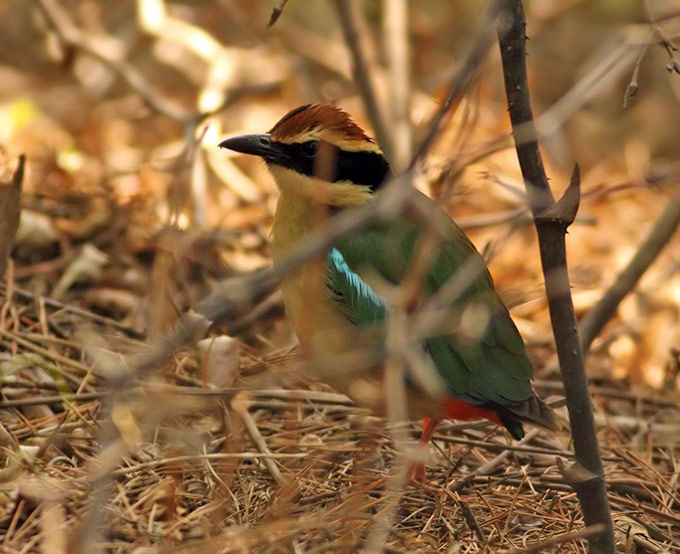
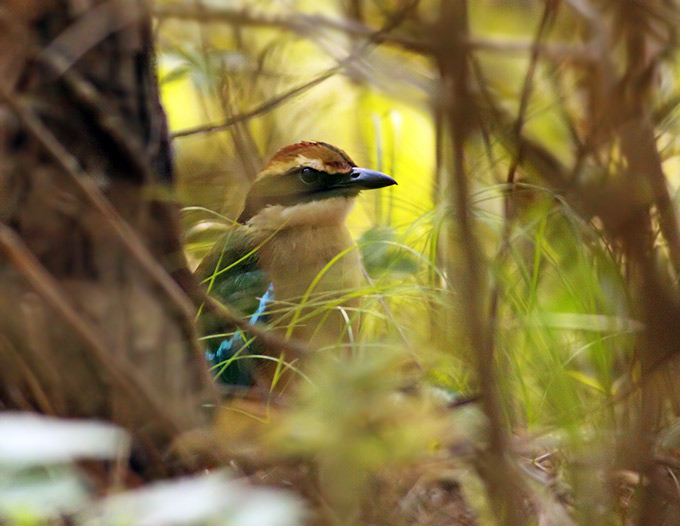
Socheong Island, May 28
Limited count effort today, though dawn on North Point started with a very distantly heard Asian Koel (perhaps only the third national record, after the first on Gageo photographed in 2001, [also on May 28th: http://www.birdskorea.org/Birds/Significant_Records/New_Birds/BK-NB-Asian-Koel.shtml] and one claimed on Socheong in April 2009), and the day also included two flyover Oriental Pratincole and a presumed Red-breasted Flycatcher (poorly sound-recorded on the road to NE Point).
Socheong Island, May 27
Bird of the day was a well-seen adult Large Hawk-cuckoo (still less than ten national records), which flew across the Narrows to land in a pine coppice, where it was ‘scoped but avoided being digi-scoped - by less than a second!
Socheong Island, May 26 & 27
The morning of the 26th featured a trickle of passage over the island's North Point, which included small numbers of Crested Honey Buzzard, Japanese Sparrowhawk, Northern Hobby, Grey-faced Buzzard, Asian House Martin and Fork-tailed Swift. Also on the headland were the ( pictured) Ashy Minivet and Two-barred Warbler. In non-avian form, a Tsushima Smooth Skink Scincella vandenburghi and a very large, apparent Greater Horseshoe Bat Rhinolophus ferrumiquinum at dusk.
On the 27th there was a strong movement of White-throated Needletail eastwards with e.g. 22 seen in 2 hours: best however was a brief but close view of a Large Hawk-Cuckoo which, very unfortunately, narrowly evaded being photographed. Otherwise, satisfying looks at the typically hard-to-see Northern Hawk Cuckoo, and a Gray's Grasshopper Warbler.On the path in the morning, a Dione Ratsnake Elaphe dione.

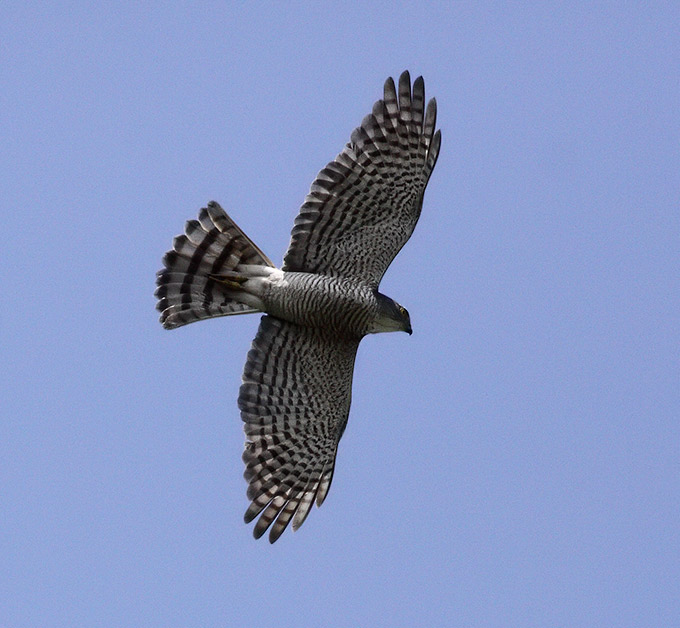
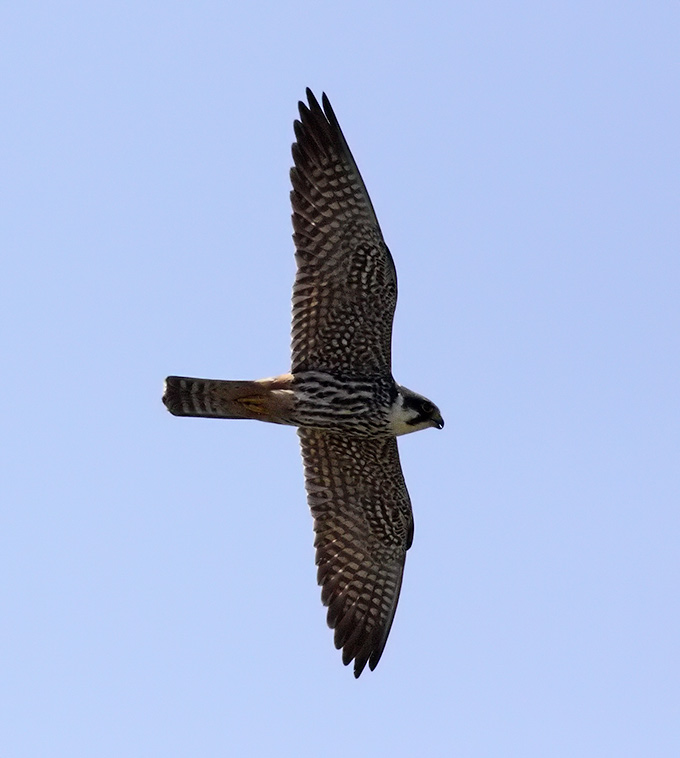
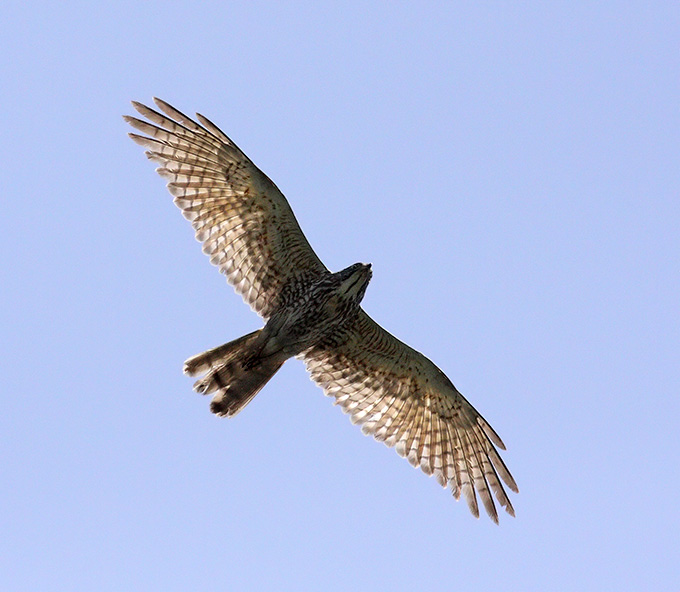
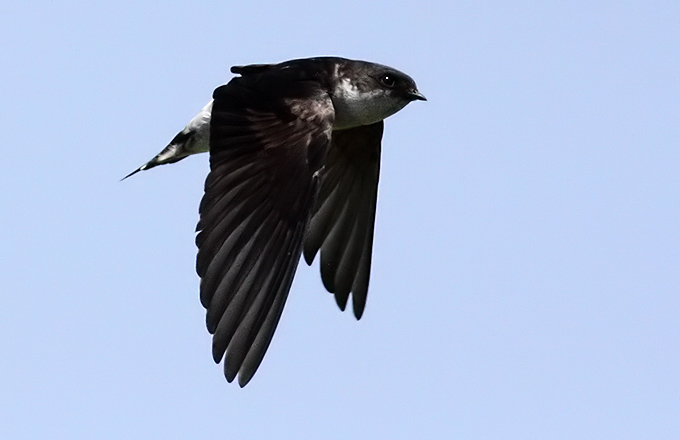
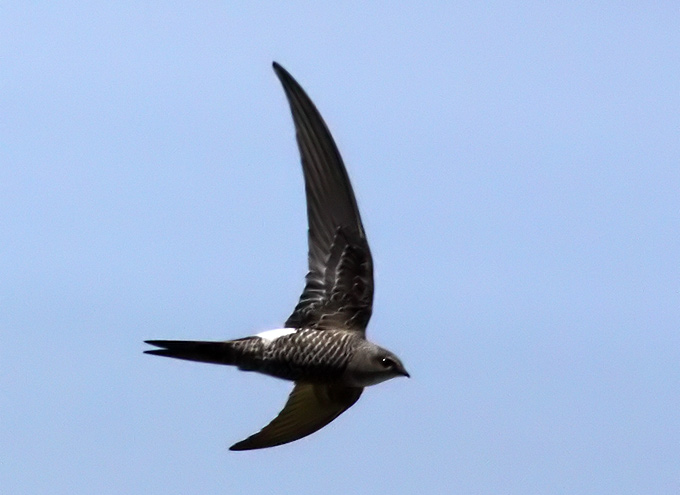
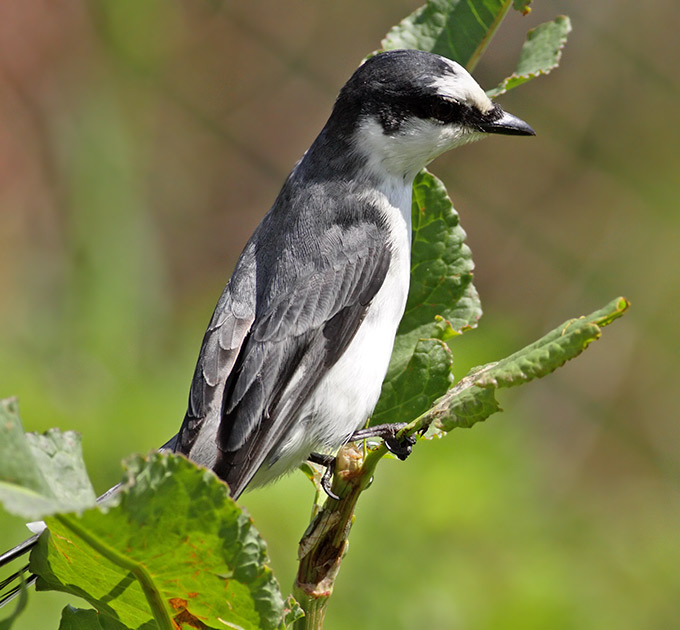
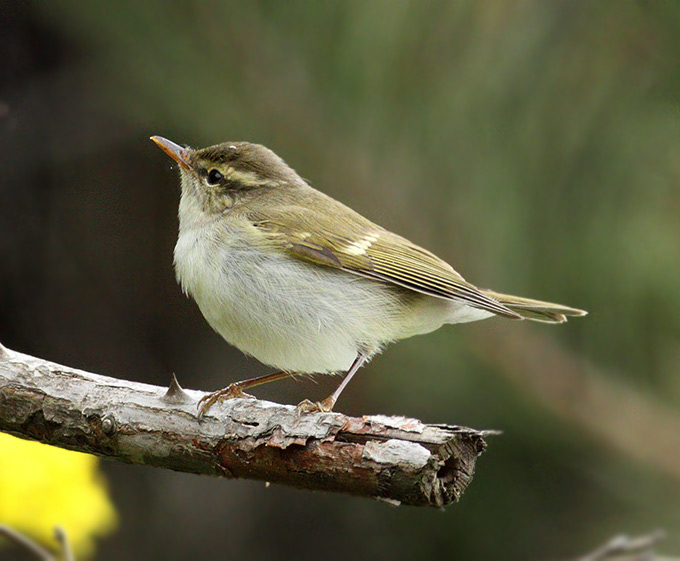
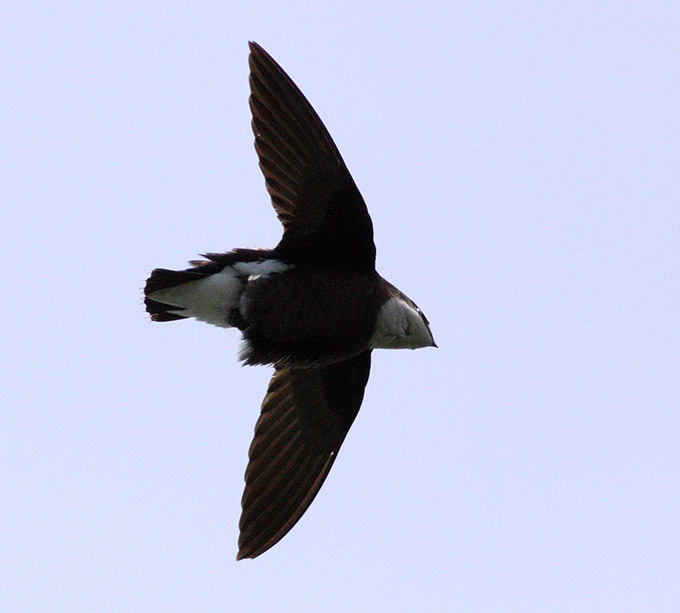
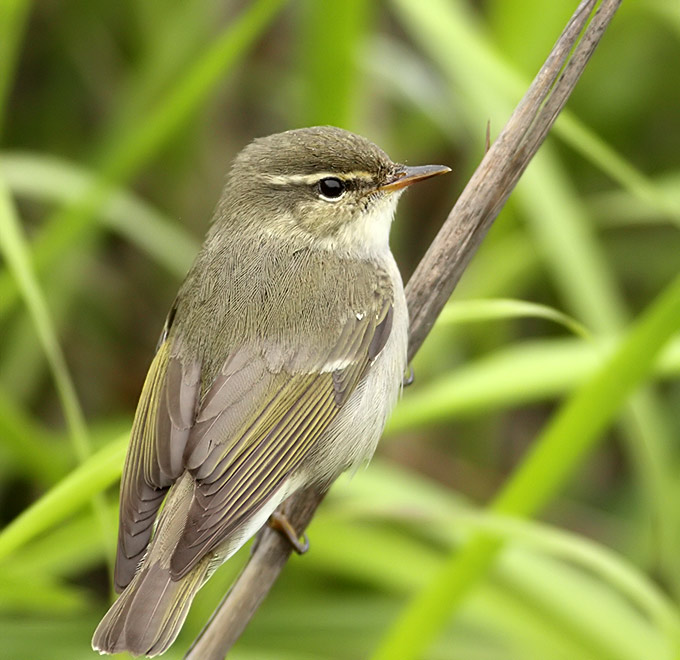
Socheong Island, May 26
Survey of the east of the island found 86 species still, with probably most interesting for the day a hepatic female Lesser Cuckoo on North Point.
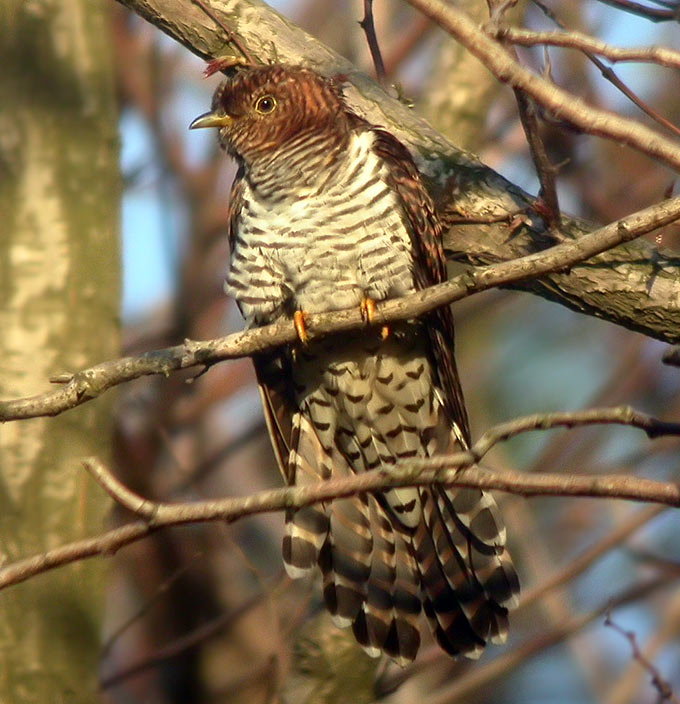

Socheong Island, May 25
Survey of the whole island found 99 species, with still decent numbers of hirundines (including one extremely pale Sand Martin type and a new national high count of eight or more Northern House Martin), at least 300 Chestnut-flanked White-eye, the first (and only) Chinese Egret of the spring, and the second Rufous-bellied Woodpecker, seen briefly in the Narrows. Other species of note included six Tiger and 95 Brown Shrikes, eight Light-vented Bulbul and two Gray’s Grasshopper Warbler.
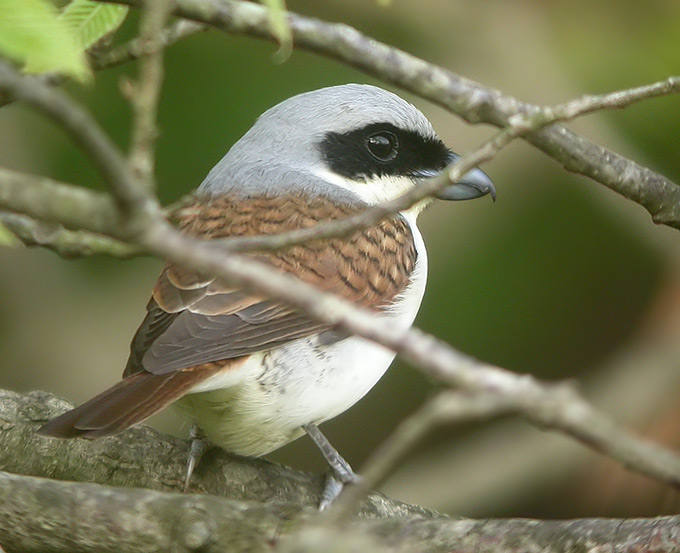

Socheong Island, May 24 & 25
Crossing from Incheon Port on the 24th featured a surprising amount of action low over the waves with a flock of 19 White-winged Tern, 3 Whiskered Tern, 9 Common Cuckoo, 2 Dollarbird, 1 White-throated Needletail, and 15 unidentified small passerines headed northeast-quite a haul for this particular sea voyage. On the island, two brief glimpses only of a Japanese Night Heron. Joining Mr. Nial Moores (Director of Birds Korea), he noticed an intriguing brown martin at dusk, which appeared to have a notably shallow tail notch. The same or a similiar individual was seen on the 25th. Also several Common House Martin and Sand Martin. Among the 90+ species were the (pictured) Brown Shrike, Dark-sided Flycatcher, resident Jay and Radde's Warbler.
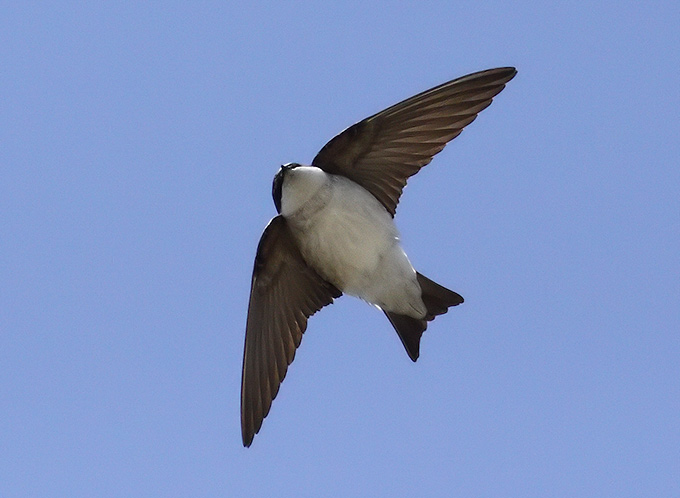

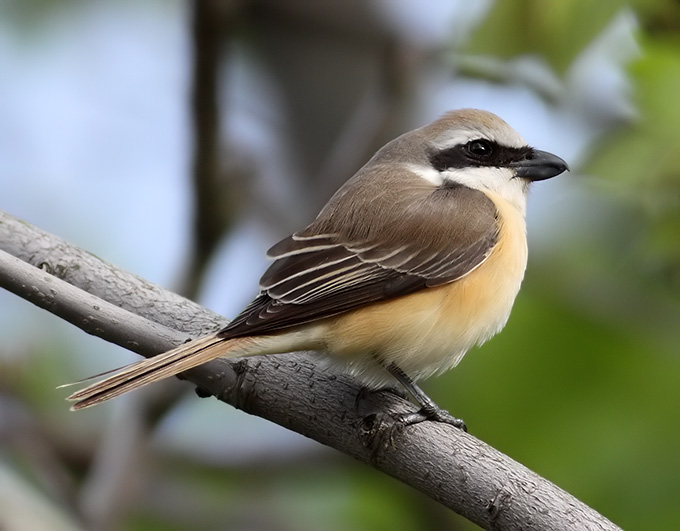



Socheong Island, May 24
A day of fog with occasional rain and drizzle in the morning, and an obvious arrival of birds. Of the 95 species logged during the day most numerous were diurnal migrants including White-throated Needletail (30), Red-rumped Swallow (280), Chestnut-flanked White-eye (275) and Eastern Yellow Wagtail (40), with a minor highlight coming in the form of a Citrine Wagtail (the fourth of Socheong’s spring).
Deokjeok Island, May 21-23
A total of 70 species seen during our three-day stay. We concentrated our efforts exclusively in the eastern third of this rather large island. The weather was fine and clear on Friday, cloudy on Saturday morning followed by steady rain in the afternoon from about 3pm onwards, and persistent light rain/drizzle on Sunday.
The birding was steady but not spectacular, with most species seen only in small numbers, but with a good variety of birds observed.
The rarest bird seen was the Eurasian Crag Martin which appeared overhead near the port, associating with a small flock of Red-rumped Swallows. It was observed for a minute or so before it headed west towards the interior of the island, and was not seen again.
Other notable records included a beautiful male Citrine Wagtail, a Black Drongo, and 3 Chinese Light-vented Bulbuls.
Among a good selection of migrants, the following birds were seen (approximate numbers in brackets):
Yellow-breasted (8), Yellow-browed (2), Tristram's (4), Chestnut (8), Chestnut-eared (2), Little (20), Rustic (1), Yellow-throated (15) and Black-faced (20) Buntings.
Asian Brown (15+), Grey-streaked (20+), Mugimaki (2) and Blue and White (1) Flycatchers.
Yellow-browed (30+), Arctic (30+), Pale-legged/Sakhalin Leaf (1), Eastern Crowned (1), Black-browed Reed (1), Oriental Reed (2) and Korean Bush (5) Warblers.
Richard's (1), Pechora (1) and Olive-backed (5) Pipits.
Siberian Rubythroat (1), White-throated Needletail (15), Fork-tailed Swift (3), Asian House Martin (3), Red-rumped Swallow (20), Brown Shrike (3), Chinese Sparrowhawk (3), Eurasian Sparrowhawk (1), White-cheeked Starling (1), Eurasian Skylark (5), Eastern Yellow Wagtail (20), Grey Wagtail (10), White's Thrush (1), Eyebrowed Thrush (5), Siberian Stonechat (1), Dollarbird (20), Black-naped Oriole (20), Eurasian Cuckoo (5), Striated Heron (2), Cattle Egret (15), Intermediate Egret (8), Great Egret (2), Little Egret (6), Grey Heron (1), Common Sandpiper (1), Common Greenshank (1), Whimbrel (2), Far Eastern Oystercatcher (2), Mongolian Gull (1).
Overall a very successful trip, with a surprisingly good variety of quality birds for so late in the season.
Socheong Island, May 21
With patchy fog and mist, survey of the east of the island found 79 species, with most in smaller numbers than on the 20th with the exception of Pacific Swift (with ca 210 through in the afternoon), Thick-billed Shrike (with seven logged), Dusky Warbler (doubling in number in the east from 34 to 69), and Grey-streaked Flycatcher (reaching 21). Other species of note included the Japanese Night Heron still, excellent views of a Northern Hawk-cuckoo and a confusus Brown Shrike with a very prominent white wing-patch and greater than average primary projection.

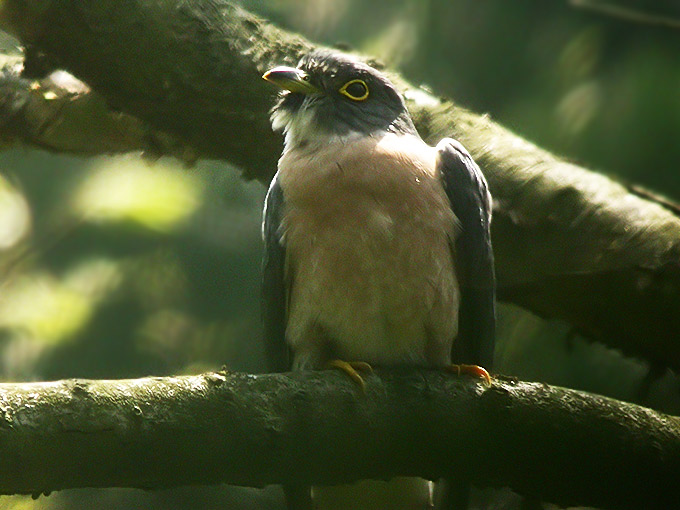

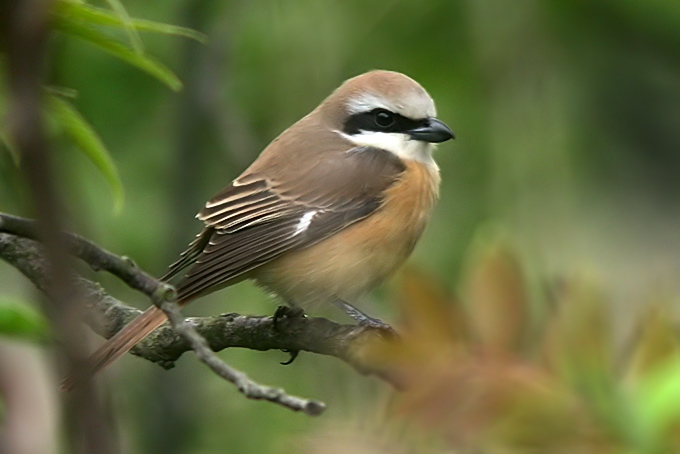
Eocheong Island, May 20 & 21
After a fog-induced delay of 5 hours, the ferry crossing to Eocheong was fairly unproductive, with only a single flock of 12 Ancient Murrelets and a brief view of what appeared to be a larger-than-porpoise cetacean.
The island was nearly as quiet, birdwise: highlights were a personal season’s first Tiger Shrike, 3 Brown Shrikes, a Black Drongo, a couple of Chinese Grosbeaks, very small numbers of Dusky, Radde’s, Yellow-browed, Korean Bush, Arctic, and Oriental Reed Warblers, a Chestnut Bunting, a few Little and Black-faced Buntings, and an Eye-browed Thrush.
The morning of the 21st was warm, calm, and foggy: southeast winds a probable reason for the increasing dearth of birds. Newly noted were a Chinese Light-vented Bulbul, a Chinese Pond Heron, a few Cattle Egrets, a Chinese Sparrowhawk, a single Siberian Rubythroat and 4 Daurian Starlings.
The reservoir and its surroundings, formerly prime areas for birds, are being bulldozed and terraced; people tell me it is because of a shortage of water.
The return ferry yielded nothing to report.
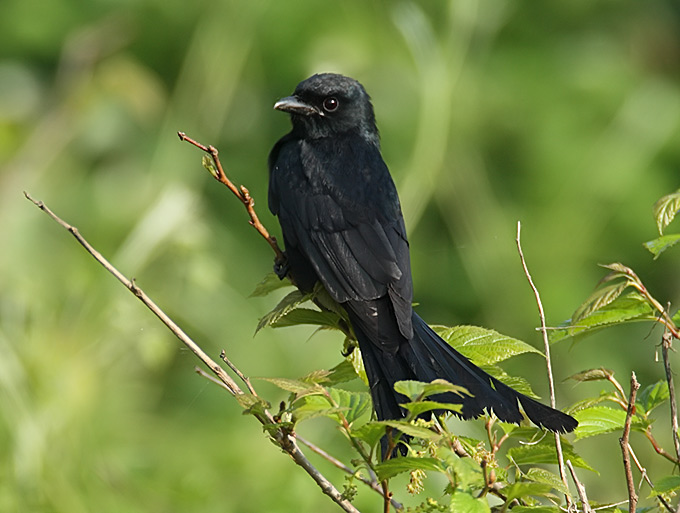

Gageo Island, May 20
While boarding the boat out, 8 new Chinese Sparrowhawk appeared and spiralled up from the southwest headland- presumably signalling what would finally have been a mass arrival of migrants. Onward to Mokpo however, and en route, a surprise Short-tailed Shearwater flew briefly alongside at Manje-do.
Socheong Island, May 19
With most of the island blanketed in dense fog, survey of the west and part of the east probably failed to find many of the birds left over from the 18th’s big arrival, but highlights still included a a briefly seen Collared Dove in the second village (Socheong’s first), a Large Hawk-cuckoo heard very briefly, and several White-throated Rock Thrush feeding in the open along one (briefly) sun-soaked stretch of road.

Gageo Island, May 19
Today marked the arrival of a Watercock, 3 Middendorff's Grasshopper Warbler, a Striated Heron and 4 Thick-billed Warbler - making for a ten-day Island total of 130 species.
The long-staying male Citrine Wagtail has been joined by a female.
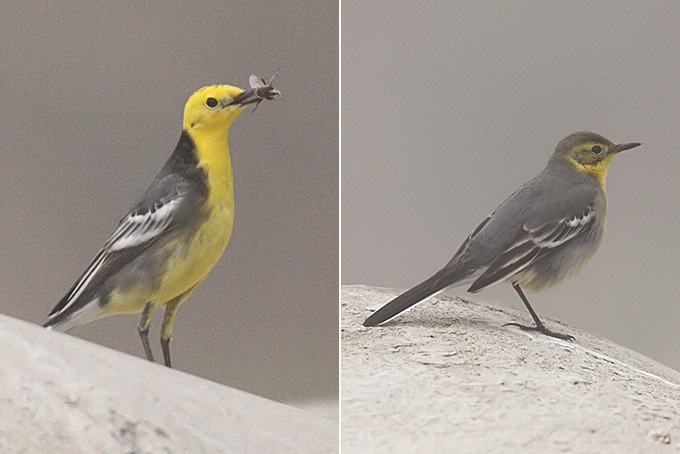
Mokpo Namhang Urban Wetland, May 19
Most numerous shorebirds are now Ruddy Turnstone with ca. 70 (one blue leg-flagged seen the last two days), only ca. 30 Bar-tailed Godwit are left in the site. While one particular area is prefered by Kentish Plover, two chicks were seen lately, Whimbrel, Grey-tailed Tattler, Terek Sandpiper, Common Sandpiper and Grey Plover can be found in most areas of the site.
Today only 4 Spot-billed Duck and a single female Eurasian Wigeon were noticed. Beside several Little Tern and a single Black-headed Gull a Black-tailed Gull was seen again (first time last week) which had "lost" most of its beak.
Highlight of the day was a Chinese Egret which could be observed all afternoon.

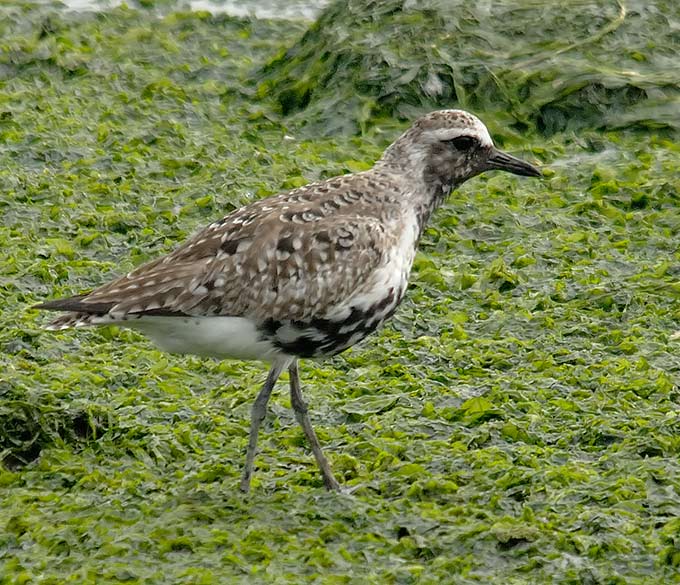
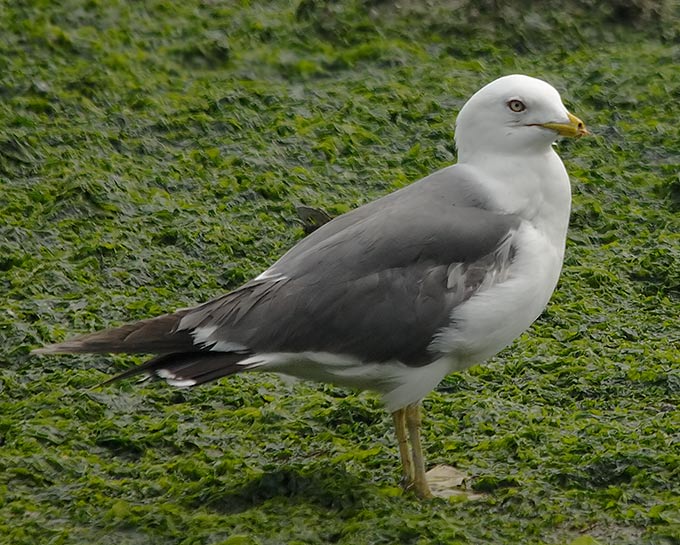
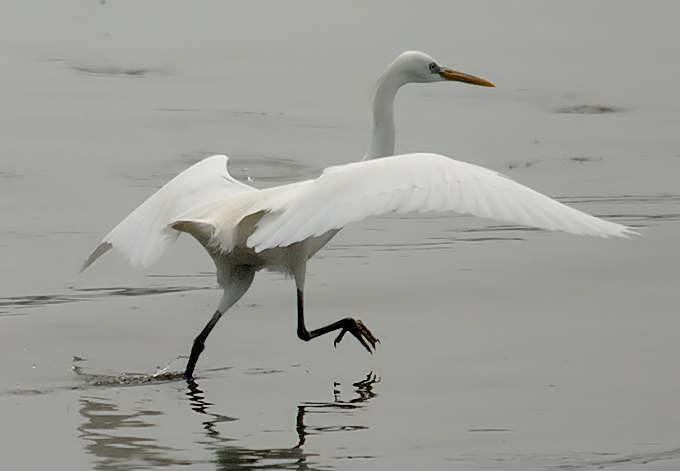
Seogwipo, Jeju Island, May 19
Relatively quiet on the bird front, on an overcast and windless morning. A quiet corner of a Seogwipo park held an elusive and interestingly-marked male Siberian Thrush, that appeared to be a 1st summer male. About 20 Cattle Egret were spotted in a nearby field, and I heard my first Common Cuckoo of the year on a hill east of town.
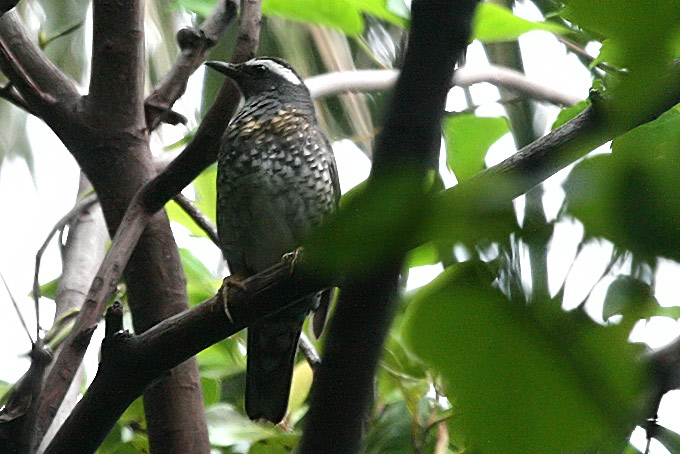
Socheong Island, May 18
With dense fog only lifting during the heaviest rain, a day of waves of arrivals and “disappearances” with 101 species logged, and probably quite a few more missed. At North Point, visibility increased briefly from less than 100m to 10 km during a very heavy spell of rain, coinciding with hundreds of birds coming in off the sea. In one five minute spell, these included over 100 Olive-backed Pipit, 100 Chestnut Bunting and 120 Eye-browed Thrush in addition to a female Asian Paradise Flycatcher (seen only as it flew close by, when identification was made based on its strongly rufous upperparts, its shiny black-capped look, and its clean cut underparts), a Manchurian Reed Warbler (which at least perched in the open long enough for all key features to be seen) and a probable female Elisa’s Flycatcher (simply, a Narcissus-type flycatcher, bright yellow below and bright green above, with no yellow rump). All were searched for during the next 90 minutes with no success. With the rain easing and the fog closing in again, survey of the east of the island found good numbers of grounded birds, including the spring’s second Tree Pipit, a new group of five Light-vented Bulbul and the last highlight of the day - a Japanese Night Heron seen at dusk.
Gageo Island, May 18
Shrouded in mist and buffetted by wind, the island revealed several birds pulled down by a night of rain. New to the logbook was a Red Knot, 1 Grey-tailed Tattler, and a Grey Plover. Despite visibility down to 20m for most of the day, some passage was detectable, including flocks of 52 Eastern Cattle Egret and 30 Grey Wagtail moving through low overhead.
Otherwise of interest, a Japanese Yellow Bunting, 1 Japanese Grosbeak, the Citrine Wagtail, a Black Woodpigeon, and so on. 7 Chestnut Bunting are still foraging around the port.
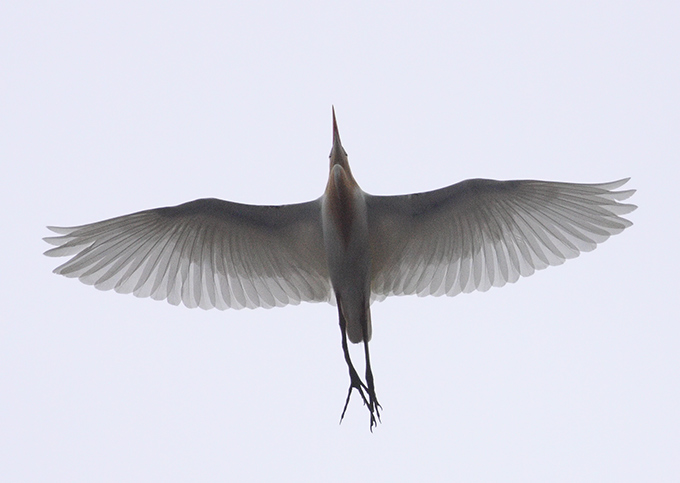
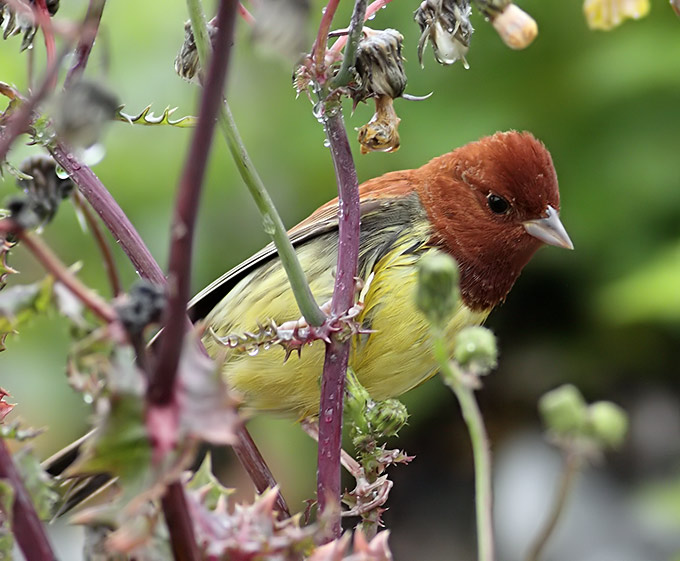
Weyeon-do, May 17
The 17th before the boat was even quieter birdwise; just before the boat, however, there was a suggestion of new arrivals: calling Indian Cuckoos (2) and Arctic (1) and Oriental Reed Warblers (2).
Ganseong coastal wetlands and Paldang 4 Rivers Construction Site, May 17
There's been some interesting birds along Nam Cheon during the last week or so. When the weather was suitable I have been checking it out in the evening after work. There has been lots of Grey-tailed Tattlers and Yellow Wagtails, some Wood Sandpipers, Long-toed Stints, Little Ringed Plovers and Common Sandpipers. A Black-winged Stilt and a Mongolian Plover have been around for the last few days. Sunday, there was a Common Greenshank, a Common Redshank, a Kentish Plover and a Red-necked Stint along the creek.
Besides the waders there have been Spot-billed Ducks, Grey Herons, Eastern Great Egrets, 4 Mallards, 3 Tufted Ducks, 2 Little Grebes, a Striated Heron and a Moorhen in the water. There were plenty of snipe, possibly more species than the Common Snipe, but that was the only species that could be seen well enough for identification purposes. The Brown Shrike is still around. There are lots of Oriental Reed Warblers, some Common Kingfishers, Siberian Stonechats and some Black-faced Buntings. There were Grey Wagtails, Japanese Wagtails, White Watails and Red-throated Pipits as well.
In the farmland near the creek were a lot of Tree Sparrows, a few Hawfinches, Black-billed Magpies, White-cheeked Starlings, Oriental Turtle Doves and Grey-capped Greenfinches. There was a pair of Eurasian Hobbies around last week and a Common Kestrel.

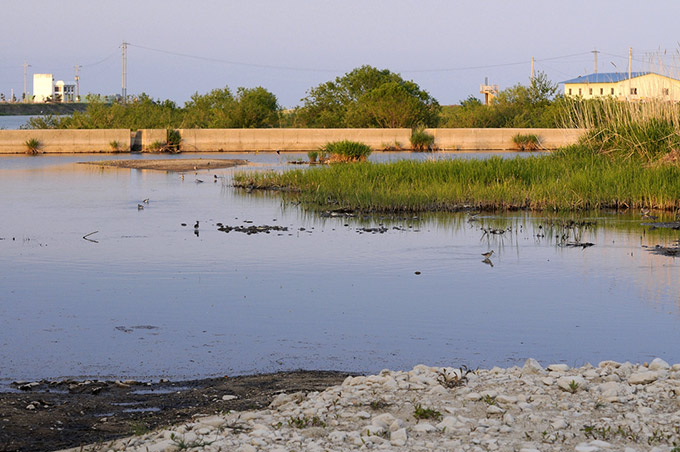
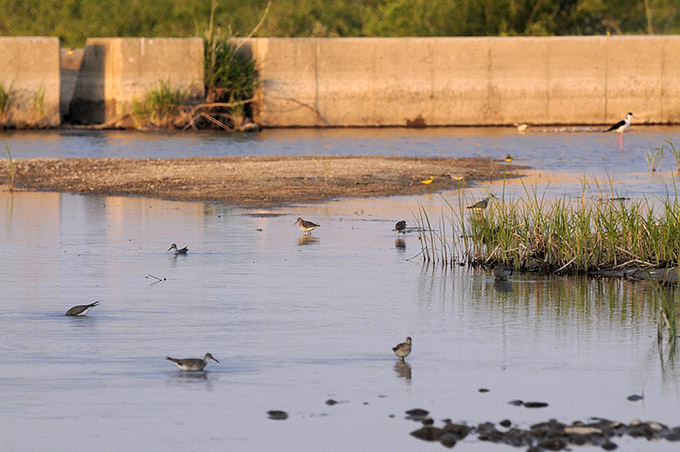
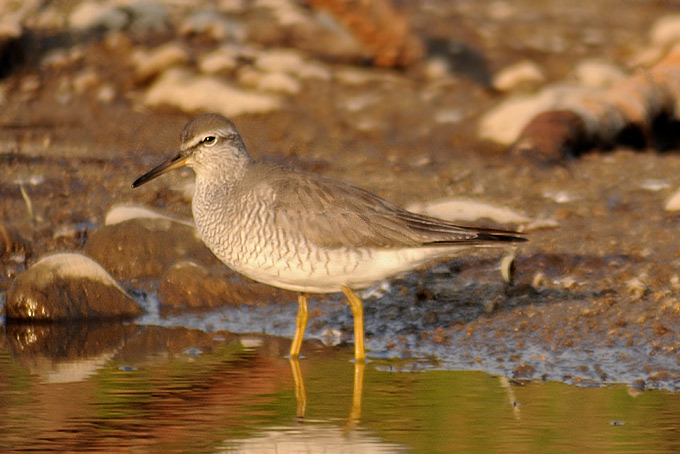
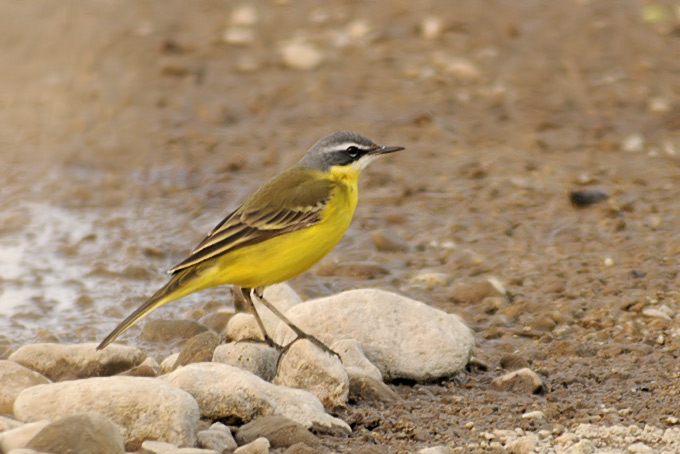
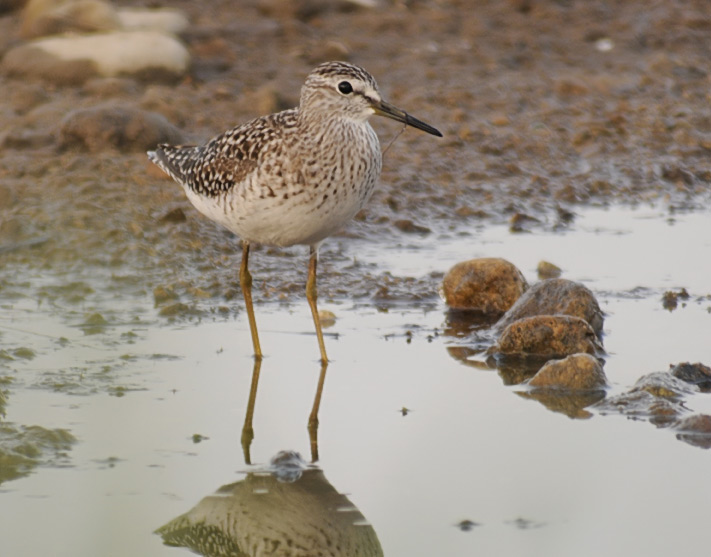

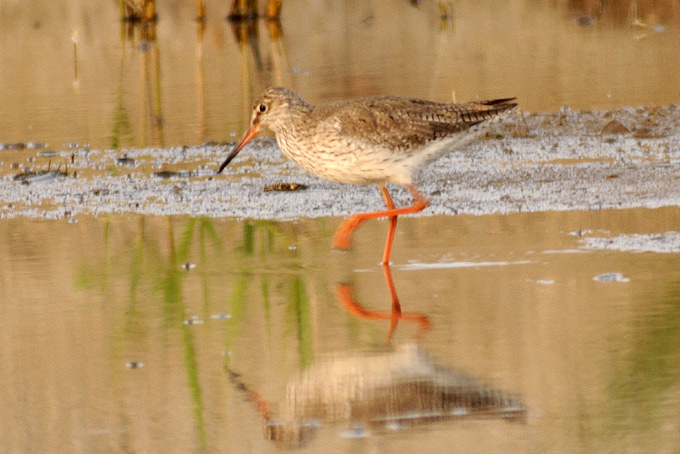
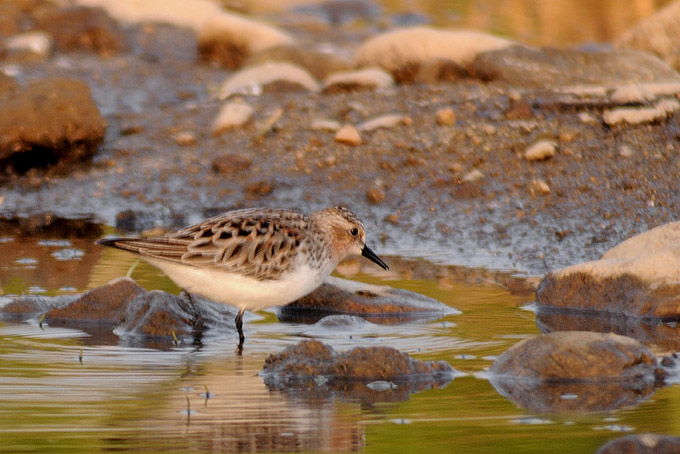
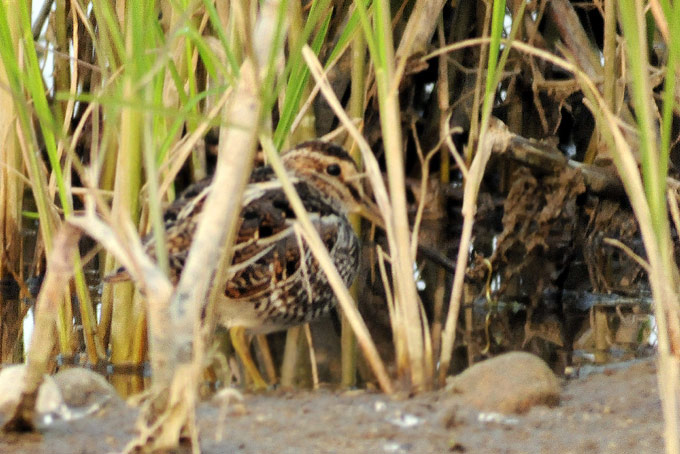
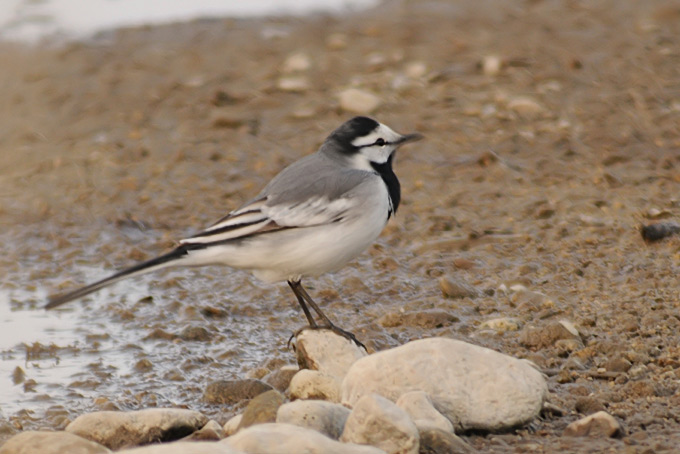

I went to see the construction (destruction) site at Paldang on the South Han River on Saturday May 15 on a tour organised by Eco Horizon Institute. The site is located where Gyeonggi Province, Gangwon Province and North Chungcheong Province meet. It was distressing to see what is being done to the wetland habitat along. All the river is being excavated to a depth of 6 metres. The riparian vegetation and sand and gravel banks that are essential breeding habitat for so many birds will all be gone. We had lunch under 4 big old trees with hollows in them. During lunch I saw White-cheeked Starlings visiting one of the hollows. Other birds seen and heard around the trees included a Dollarbird, Black-naped Oriole, Daurian Redstart, Long-tailed Tits, Great Tits and Barn Swallows. These trees are within the proposed construction site, even though they are more than 50 metres from the existing river channel on the side of the flood bank. The fast track approach of the project has no time to consider the value of these ancient habitat trees.

Returning to Gangwon Province on Sunday I saw a Black-capped Kingfisher for the first time this year. The Dollarbird and Oriole were also first sightings for 2010 in Korea for me. There was a Dollarbird in Ganseong this morning, May 17.
Socheong Island, May 16
After a few days off-island, survey of both west and east found 88 species, with the personal first Lesser Cuckoo and Dark-sided Flycatcher of the spring, a possible Common Swift in with a group of Pacific Swift, and a new Light-vented Bulbul – being actively serenaded by the local bird (the only one to have survived the severe and prolonged winter). Oddest was the resighting of a hepatic female cuckoo first seen on the 15th: this individual was strikingly rufous, with a very broad rusty-red rump. While one or more field-guides suggest that hepatic Lesser Cuckoo can show a largely unbarred rump, structurally this bird seemed much closer to either Oriental or Common (e.g. it looked large and quite long-billed) and also showed a very prominent black subterminal tail band. With apologies for the lack of quality of the images (digiscoped before sunrise), informed opinions on the identity of this bird would be most welcome…


Weyeon-do, May 16
The 16th added a Chinese Pond Heron, 2 Cattle Egrets, a calling Indian Cuckoo, a Daurian Starling, several more White-throated Rock Thrushes, a calling Brown Hawk Owl and a few more Siberian Blue and Rufous-tailed Robins and a Siberian Rubythroat. SCG saw a pair of Chinese Blackbirds. From the morning on, a clearout seemed to be underway: Chestnut Bunting numbers in particular seemed to diminish. I saw one Meadow Bunting in compensation.

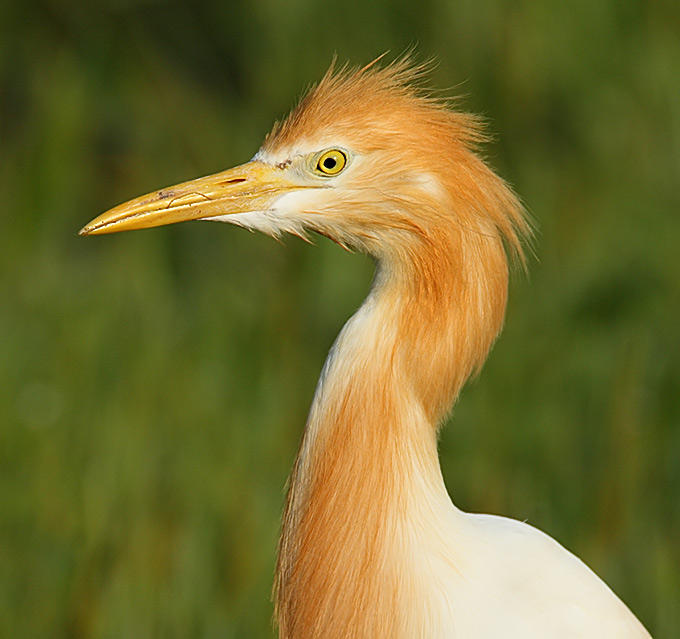
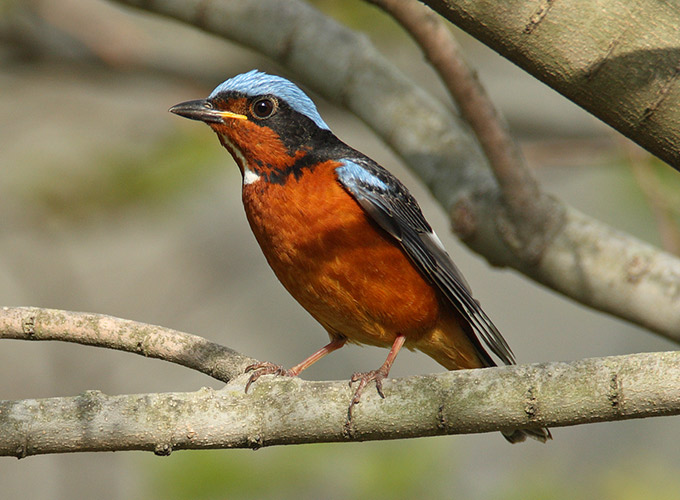
Gageo Island, May 16
The island appears to have mostly emptied of birds - of 52 species, two new observations: an Eastern Great Tit and a Brown Hawk Owl.
There are however still e.g. 3 Grey-Streaked and 11 Asian Brown Flycatcher in the village.

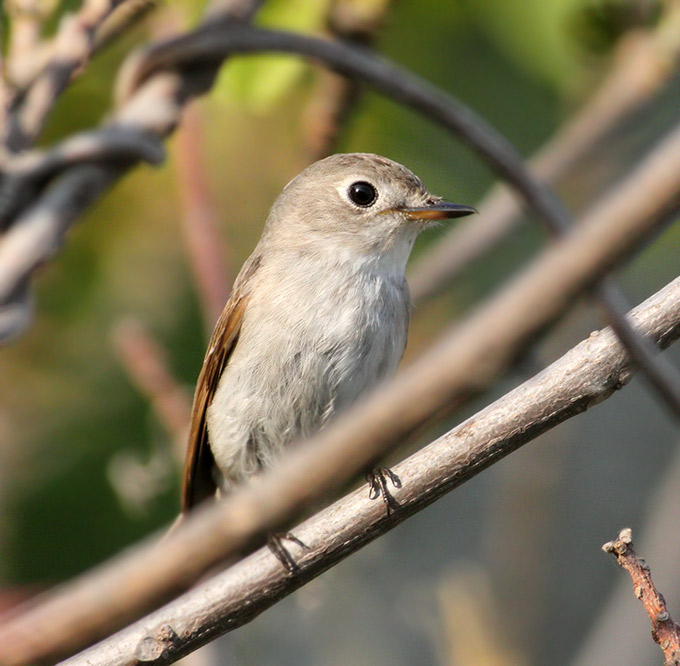
Aphae Island, May 16
The southern tidal flat showed not so many birds as expected – only about 400 Dunlin, 30 Common Greenshank, several Bar-tailed Godwit, Grey Plover, Whimbrel, Red-necked Stint and Mongolian Plover were seen. Most beautiful to watch were two Kentish Plover taking an extensive bath on a field.
The northern tidal flat surprised with over 5000 shorebirds on their roost. About 500 Bar-tailed Godwit, 400 Grey Plover, 200 Whimbrel with small numbers of Common Greenshank, Far Eastern Curlew, Mongolian Plover and the rest all Dunlin.
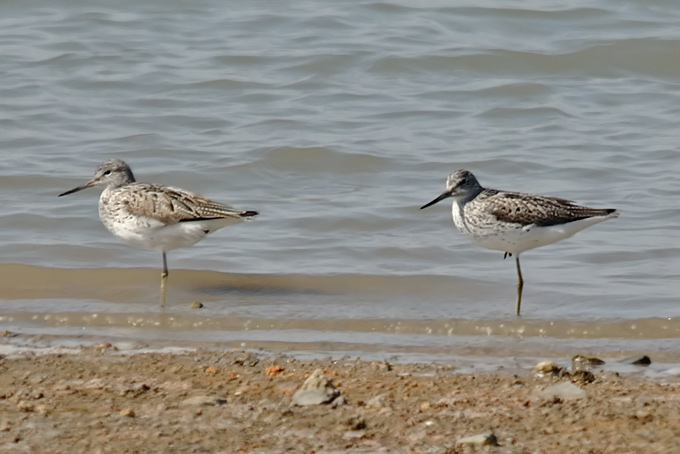
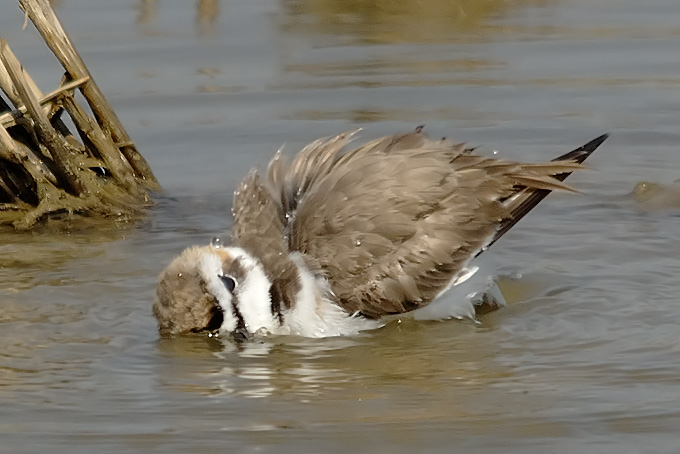
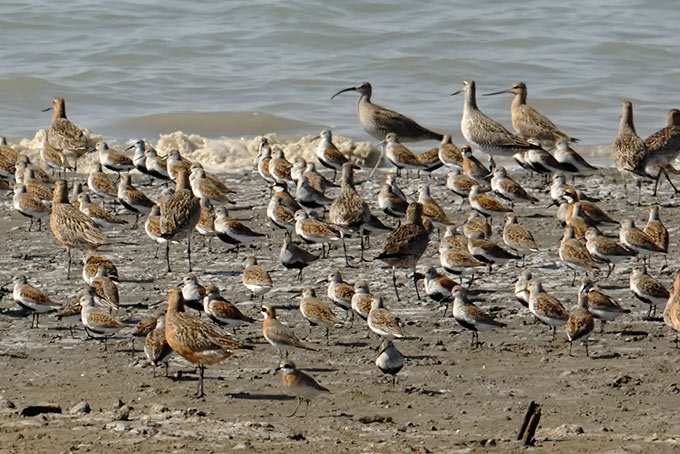
Whimbrel Numenius phaeopus, Photo © Andreas Kim
Weyeon-do, May 15
The ferry ride through calm haze from Daejon was virtually birdless, but a morning’s total of 8 Finless Porpoise gave consolation . On the island, the most numerous bird was Chestnut Bunting, with about 70 tallied. Other highlights: 6 White-throated Rockthrush, a single Forest Wagtail, a single Chinese Sparrowhawk, a Brown Shrike, small numbers of Tristram’s, Yellow-breasted and Yellow-browed Buntings, somewhat more (c.30) Black-faced Buntings, 3 Mugimaki Flycatchers,2 Taiga Flycatchers, a few Blue and White, Streaked, and Yellow-rumped Flycatchers, scattered Pale and Eye-browed Thrushes, a few Dusky, Radde’s, Yellow-browed and Pale-legged Leaf Warblers, a calling Oriental Scops Owl, one each of calling Common and Northern Hawk Cuckoos, a few Olive-backed Pipits, a Richard’s Pipit, scattered Siberian Blue and Rufous-tailed Robins.
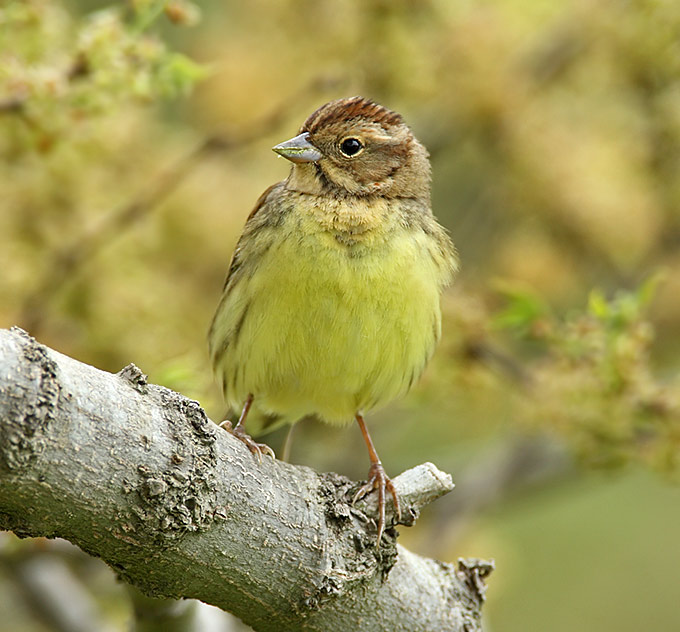
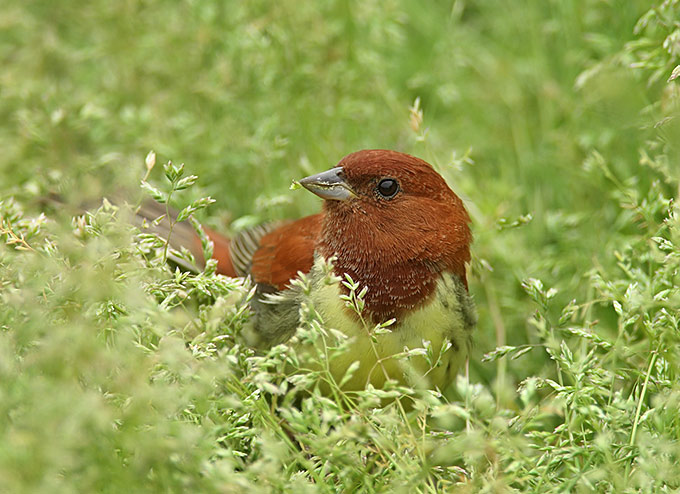
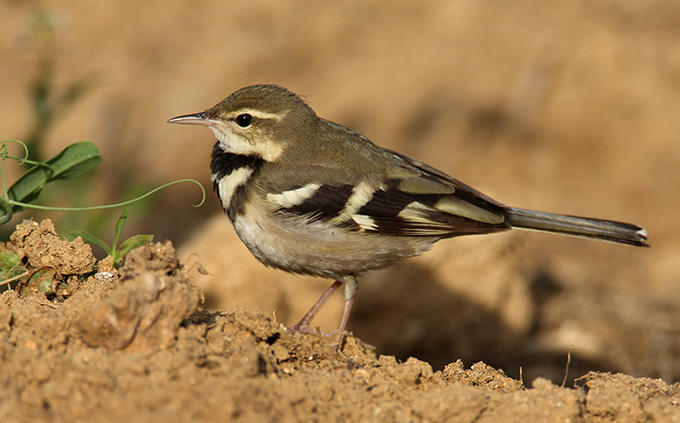
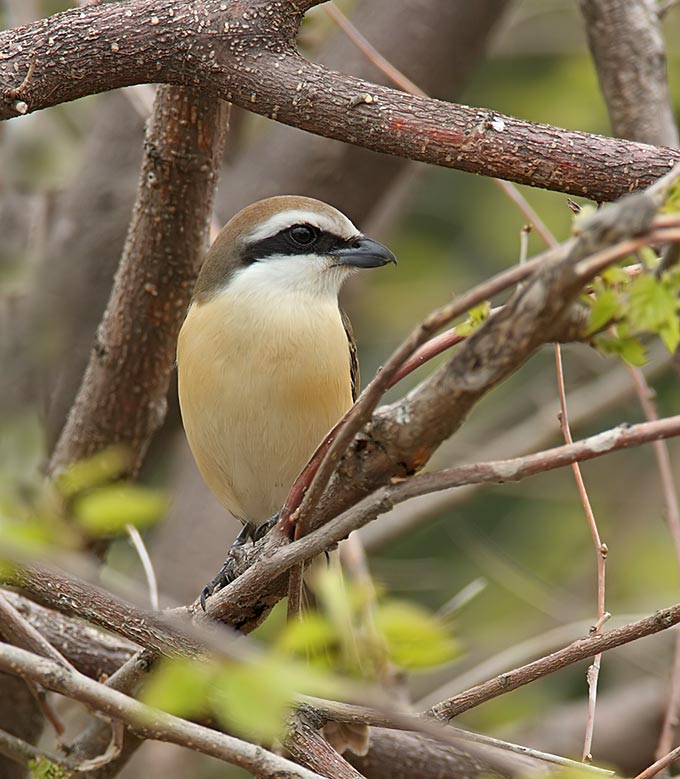
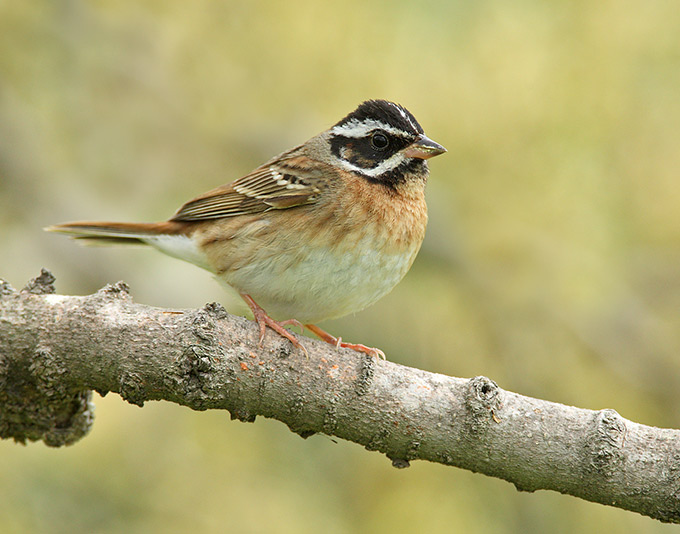

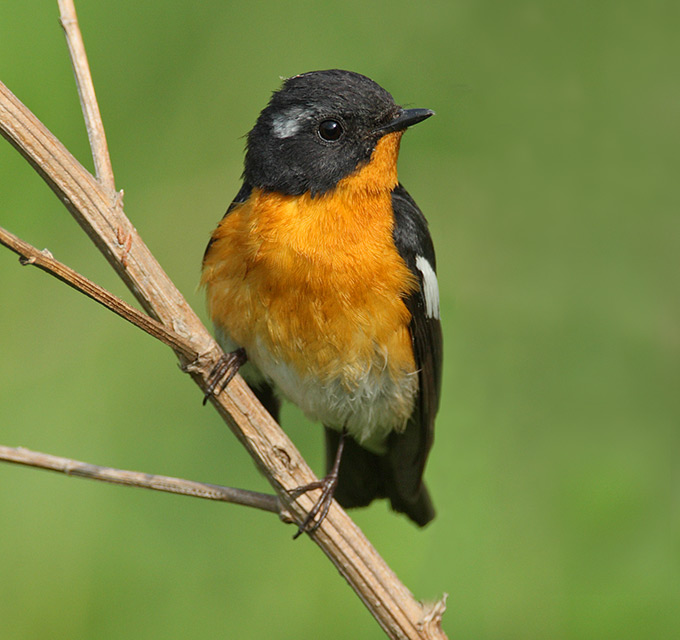
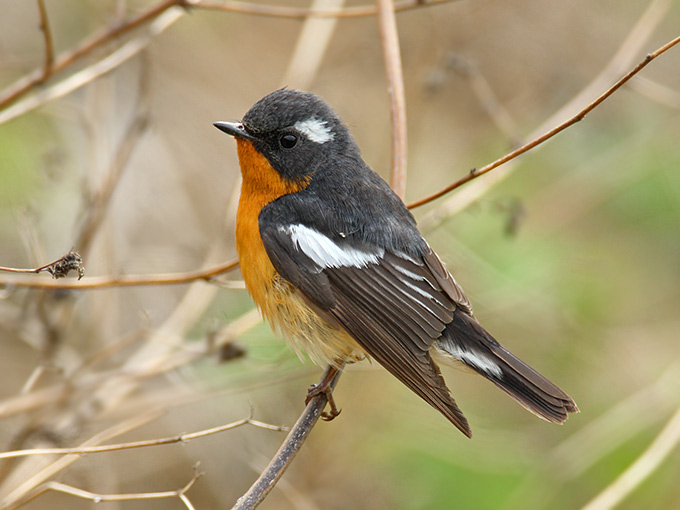


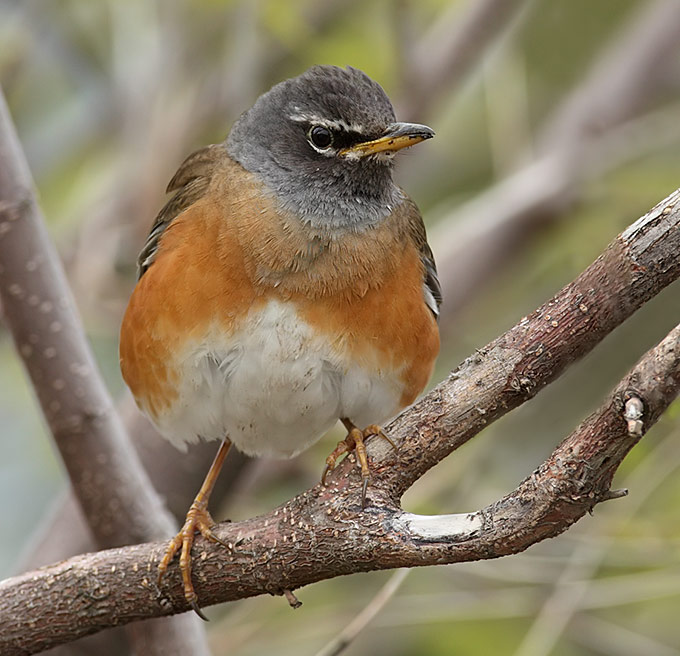
Gageo Island, May 15
With a continued easterly wind, very dull in the bird world today. However the first Forest Wagtail has appeared, the first Lesser Cuckoo was sounding from the hillside, and a Pintail Snipe, killed by one of the local Siberian Weasel- which I have seen almost daily. Also new to the scene, a lucionensis Brown Shrike (previous days have all been confusus).
Specials such as the Citrine Wagtail, 3 Japanese Grosbeak and a Chinese Bulbul are all still present: also today, 8 Rufous-tailed Robin, 2 Mugimaki Flycatcher and the patrolling Peregrine.
In the dying moments of the light, 50 twittering Barn Swallows mingled together in an ever tighter swirling mass, before suddenly whooshing down to roost in the bamboo.
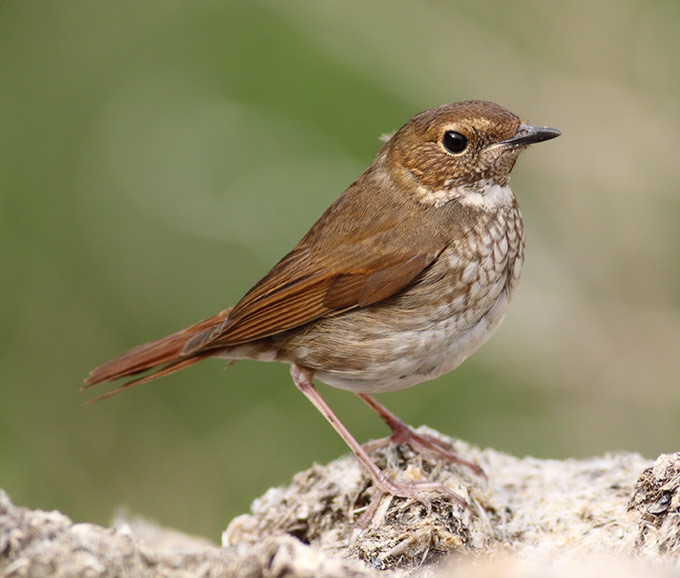
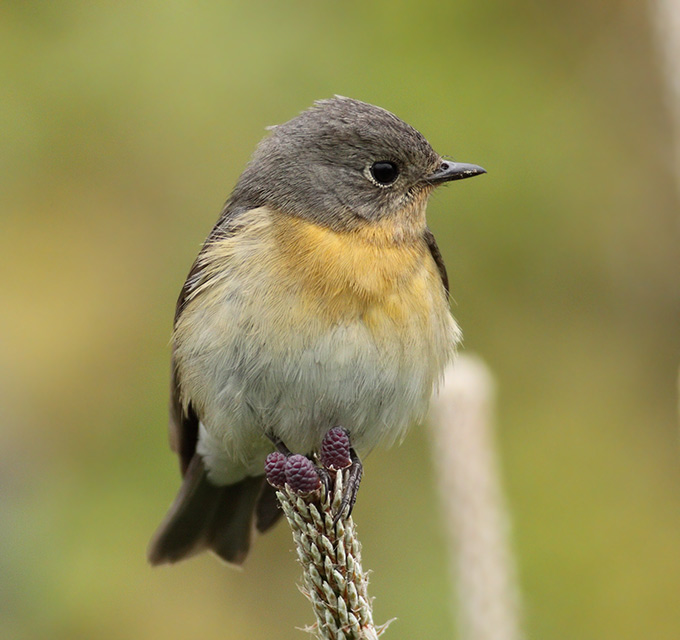

Gageo Island, May 14
Warm and sunny with a northeasterly wind. Rather quiet birdwise with low numbers: 68 species seen through 1-Gu and the back trail. New observations included a Little Ringed Plover, a White's Thrush, a Narcissus Flycatcher, 3 Dark-sided Flycatcher and a single Buff-bellied Pipit.
Also in hanging around were 6 Yellow-rumped Flycatcher and 10 Chestnut Bunting.
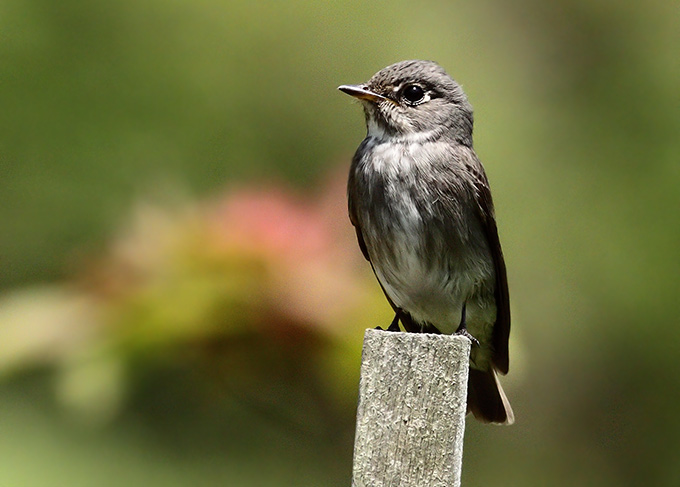
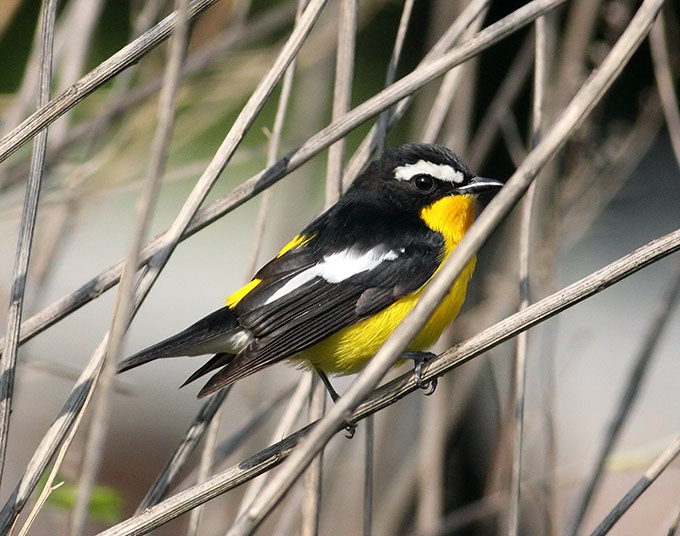

Gageo Island, May 13
A light southwesterly breeze, with an equal share of sun and cloud. A liesurely survey of 1-Gu only took in 65 species, best of them a gorgeous male Citrine Wagtail: also new in was a Black Drongo, 1 Greater Short-toed Lark, a Taiga Flycatcher, 1 Oriental Turtle Dove and most unexpected, a Eurasian Magpie- the first record for the island.
Gageo Island, May 12
Outstanding birding with 84 species logged. The southwesterlies of the day previous had dumped a treasure-trove of migrants in the quarry, and significant ongoing migration became obvious by early afternoon with several flocks of unidentified passerines moving along the mountain ridge. Exploration of upland woods towards 3-Gu uncovered a host of refueling birds: the sound of leaf litter being trampled by an army of thrushes.
Fresh in was 1 Brambling, 4 Indian Cuckoo, 1 Common Kingfisher, 1 Pelagic Cormorant, a Daurian Starling, 1 Terek Sandpiper, 5 Siberian Rubythroat, 148 Rufous-tailed Robin, 2 Asian Stubtail,2 Red-flanked Bluetail, 13 Siberian Blue Robin, a presumed Hume's Warbler, 2 Radde's Warbler, 23 Black-naped Oriole, 2 Sand Martin, a Eurasian Hoopoe, 2 Black Woodpigeon, 1 Pale-legged Leaf Warbler, 1 Northern Goshawk, 1 Arctic Warbler, 201 Eyebrowed Thrush, 1 Eurasian Cuckoo, 2 Blue & White Flycatcher, 3 Japanese Grosbeak, 1 Dusky Thrush and 2 White-throated Rock Thrush.
Also in the influx e.g. 80 Tristram's Bunting, 30 Chinese Grosbeak, 26 Dollarbird (bunched together along the wires), 12 Yellow-rumped Flycatcher, 22 Oriental Reed Warbler, 27 Asian Brown Flycatcher, 75 Barn Swallow, 35 Yellow-browed Warbler, 9 Ashy Minivet, 82 Black-faced Bunting, and most spectacularly the overhead passage of 184 Fork-tailed Swift.
Prettiest sight of the day, four Pacific Golden Plover huddled silently in the quarry.

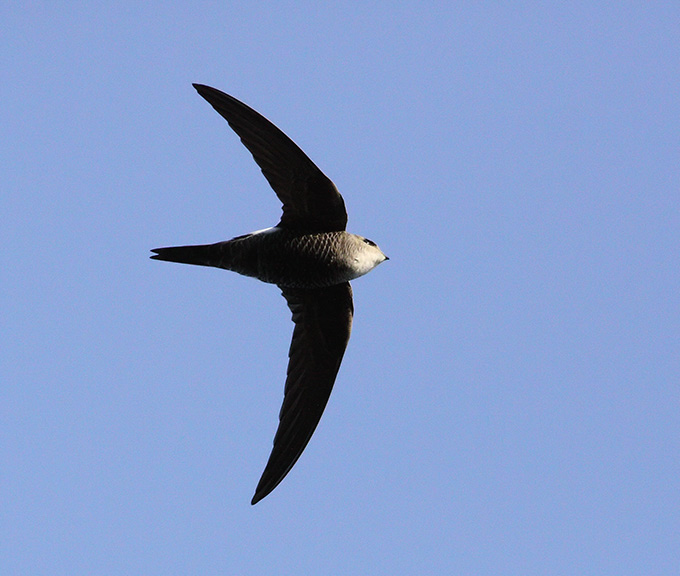
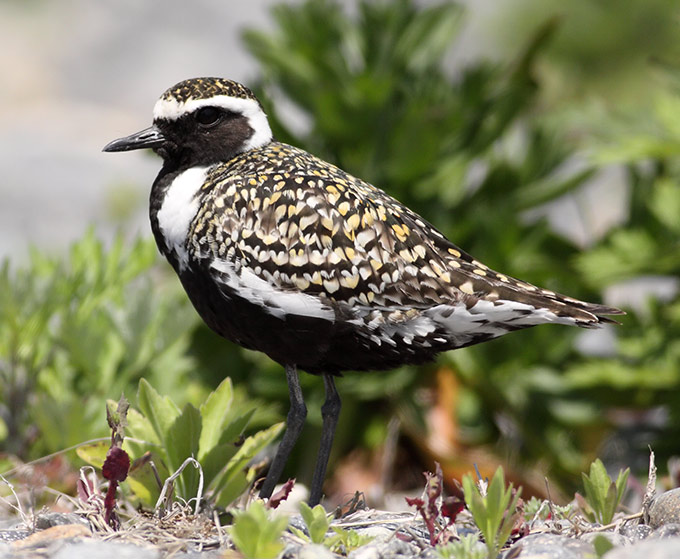
Gageo Island, May 11
Warm and sunny.The clearout continues, with dwindling numbers but a steady trickle of newcomers. A liesured survey of 1-Gu revealed 56 species. New to the logbook was a Common Tern, 1 Black-browed Reed Warbler, 3 Yellow-breasted Bunting, a Dusky Warbler, an Eastern Crowned Warbler, a Mongolian Gull, 3 Oriental Reed Warbler, a Dollarbird, 1 Chestnut-eared Bunting and a confusus Brown Shrike.
Our long-staying Sharp-tailed Sandpiper, immortlised in so many recent images on here, has finally perished from starvation. Unfortunately its favoured feeding zone along the waters edge is no longer mud but concrete.
In the quarry there is a new Mongolian Plover, where also e.g. 21 Little Bunting.
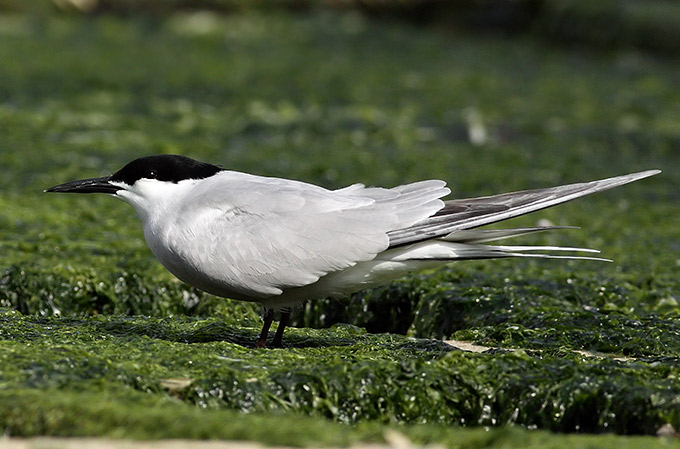
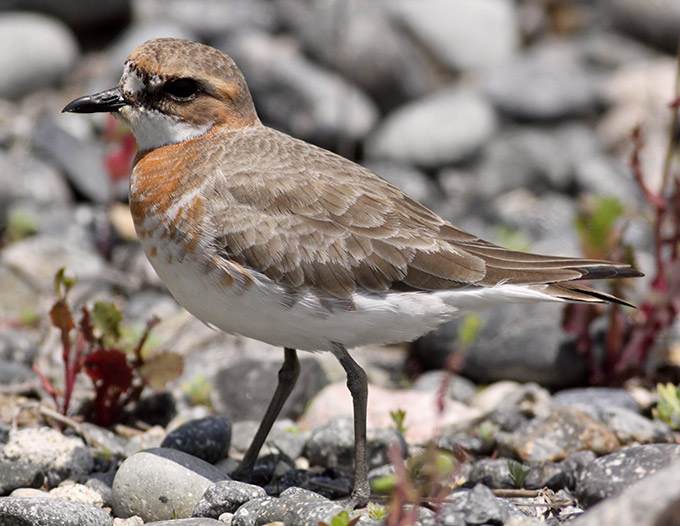
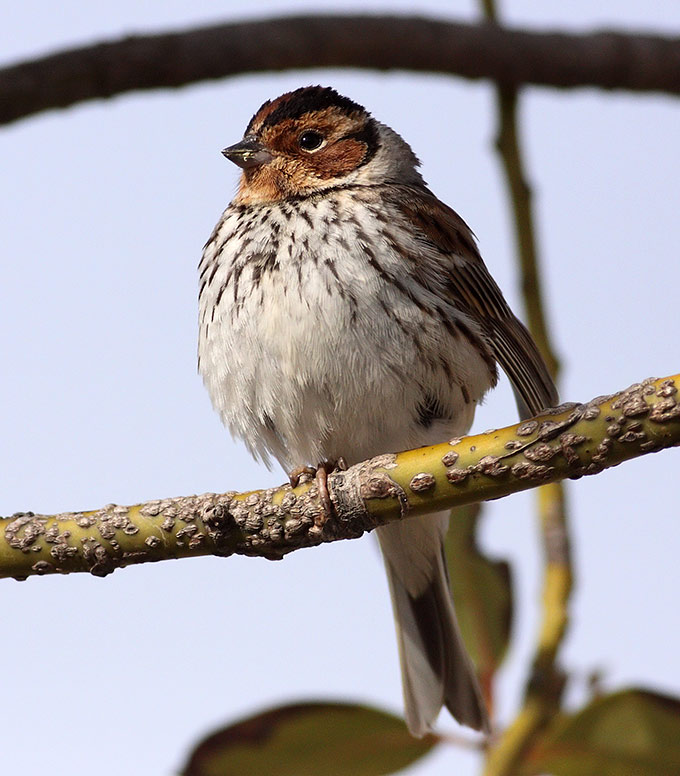
Gangwon Province coastal wetlands, May 11
I did a bird survey along Namdae Cheon on Saturday morning, May 8. Most of the buntings and other birds were not in the trees on the southern side of the floodbank near the coast, just a couple of Little Buntings. There were plenty of Black-tailed Gulls and a pair of Red-breasted Mergansers on the back of the sandbar. There were some Barn Swallows and a couple of Red-rumped Swallow flying overhead. There was not sign of the Little Tern that I had seen on the last couple of visits to the area. I suspect that there was too much human disturbance for them to stay and breed as they did last year.
Upstream from Naksandae Bridge I saw Spot-billed Ducks, 3 Mallards, 9 Eurasian Wigeons, a Pintail, a pair of Falcated Teal, Grey Herons and a Red-throated Loon in breeding plumage. The loon appeared to have some kind of problem that caused it to lean to the right exposing its underparts to the left.
Further upstream I found a Chestnut-eared Bunting, a Zitting Cisticola, Black-faced Buntings, Little Buntings and Vinous-throated Parrotbills. I also flushed some Common Pheasants, Common Snipe and Pintail Snipe. Closer to Yangyang I found some waders on a gravel bank, including Little Ringed Plovers, a Common Greenshank, Grey-tailed Tattlers, Sharp-tailed Sandpipers and a Long-billed Plover. There were more buntings in the riparian vegetation along with Olive-backed Pipits, Richard's Pipits and a Little Ringed Plover doing the broken-wing display to lead me away from its nest that must have been somewhere nearby.
In the afternoon I checked out the birds on Cheongcho Lagoon in Sokcho. I got very close to a Grey-tailed Tattler that was catching and eating worms on a sandbank at the side of the lagoon. There were 4 tattlers, Black-tailed Gulls, Grey Herons, 2 Eurasian Coots and some Spot-billed Ducks. Around the north western corner of the lagoon I found a Broad-billed Sandpiper, 2 Terek Sandpipers, a Great Crested Grebe, several Little Grebes and a Black-necked Grebe in breeding plumage.
Sunday afternoon, May 9, I walked along Nam Cheon near Ganseong to the coast. I was pleased to see some different birds, some that I hadn't seen in Korea before. There were Hawfinches in the grape vines as I walked from my apartment to the creek. On the sandbanks there were Little Ringed Plovers, a Japanese Wagtail and Common Sandpipers. In the grass and regenerating willows I saw Oriental Reed Warblers, Siberian Stonechats, Yellow-breasted Buntings, Little Buntings and Tree Sparrows. Then in the trees along the creek bank I found a Brown Shrike. It was eating a small frog that it had just caught.
Near the wiers further down the creek I saw about 50 Yellow Wagtails, Common Kingfishers, Grey-tailed Tattlers, Long-toed Stints, Sharp-tailed Sandpipers and a Curlew Sandpiper in breeding plumage. I also found some Common Snipe, Spot-billed Ducks, Tufted Ducks, a Mallard, Grey Herons, Little Grebes and a Purple Heron.
Visiting Nam Cheon again on Monday evening I found a Black-faced Bunting Emberiza spodocephala personata with several more common E. s. spodocephala. The Yellow Wagtails were gone but I added a Red-necked Stint and a Moorhen to what was there the previous evening. There were a couple of Wood Sandpipers in the rice fields.
On Monday evening I saw about 230 Black-tailed Gulls on the sandbar and I could see about 12 Red-breasted Mergansers out on the sea.
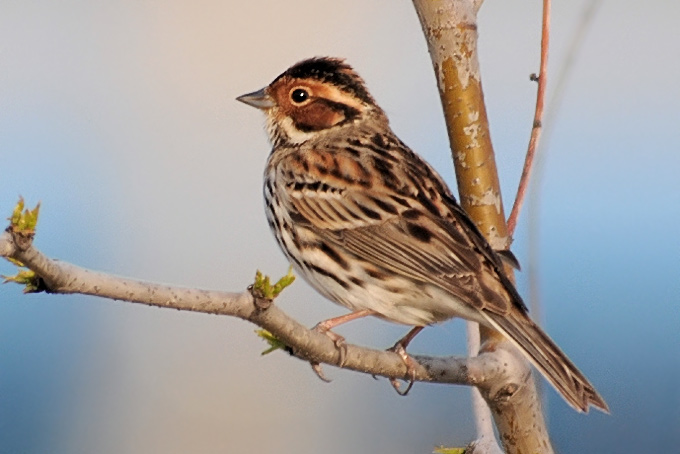


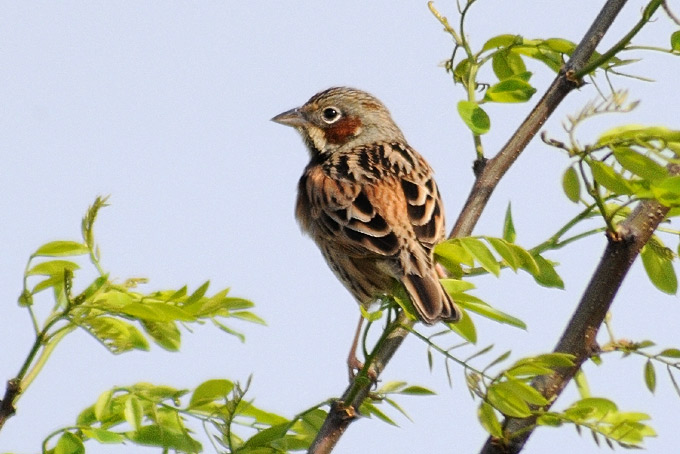

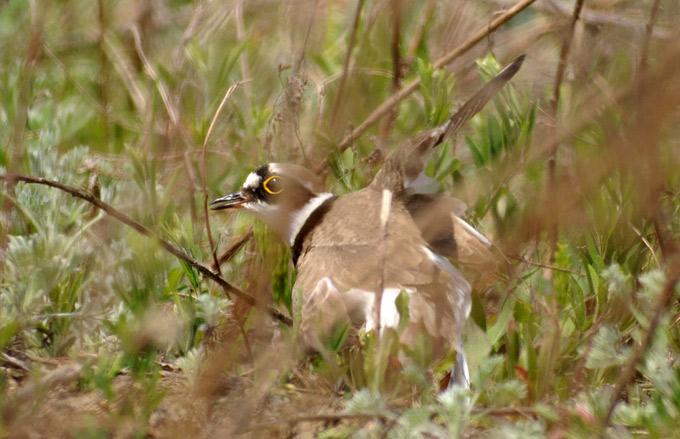
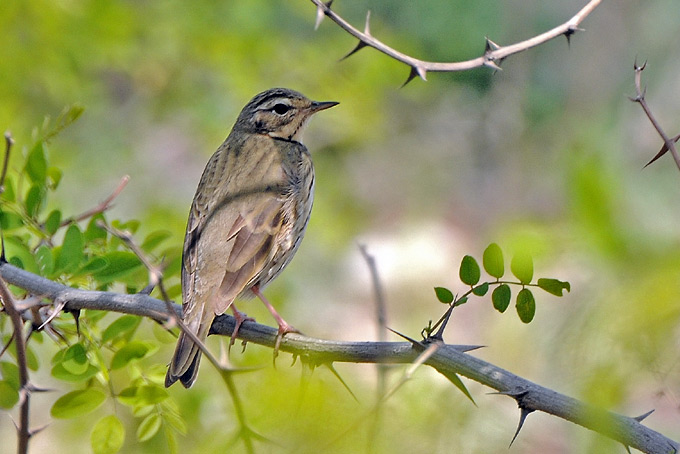

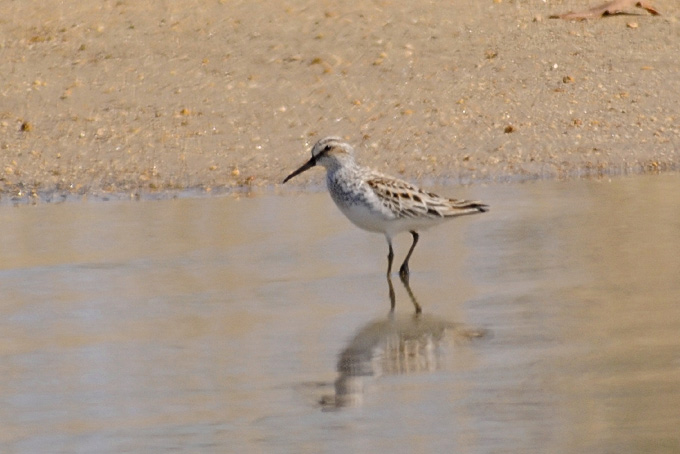

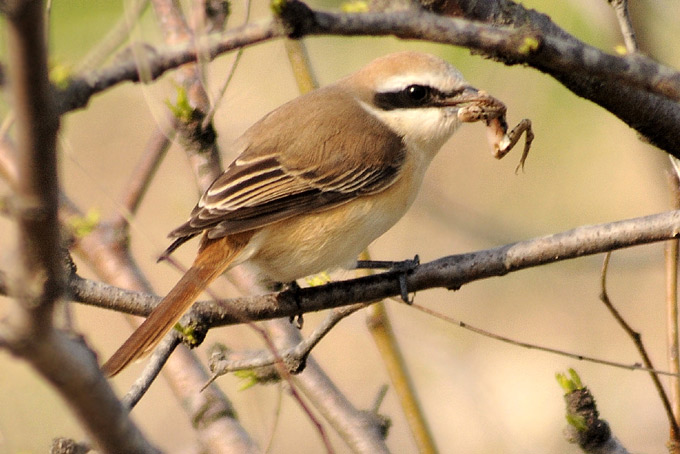

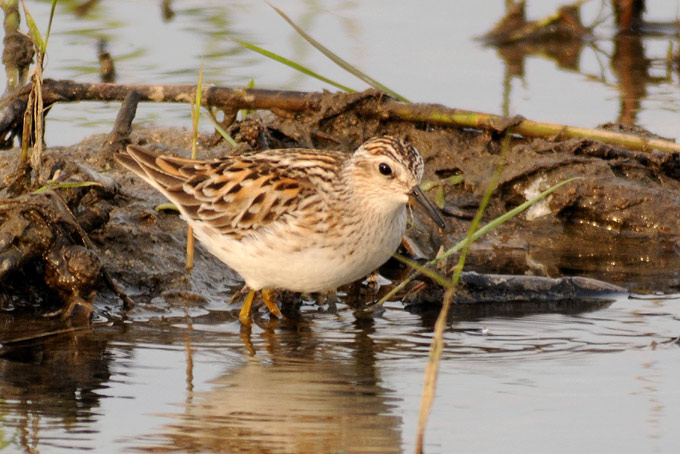
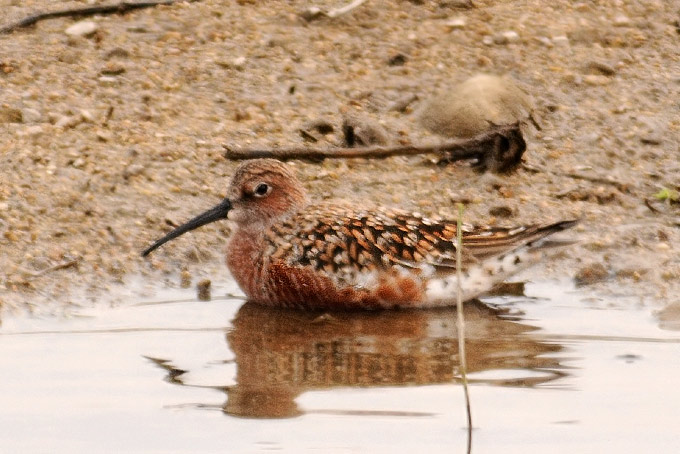
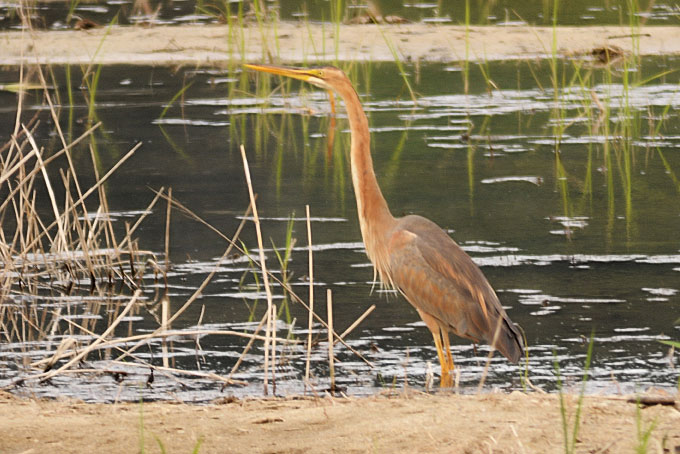
Socheong Island, May 10
Survey of the whole island found 93 species, with the first Black Drongo, Pallas’s Grasshopper and Oriental Reed Warblers of Socheong’s spring.
Gageo Island, May 10
A full day in warm sunny weather, surveying both 1 & 2-Gu. Anticipated rain did not arrive, instead strengthening north-easterly winds. Of 67 species logged, most outstanding a Grey-headed Lapwing and superb male Oriental Plover- the latter typically very wary and elusive. Other highlights included an Oriental Pratincole and White-breasted Waterhen.
Also new for the day, 5 Pacific Golden Plover, a Spot-billed Duck, 1 Brown Thrush, 4 Asian Brown Flycatcher, 1 Wood Sandpiper, a Japanese Yellow Bunting, 1 Temminck's Cormorant, 1 Eastern Buzzard, 2 Yellow-rumped Flycatcher, 17 Pacific Swift, 5 Grey-faced Buzzard, 13 Asian House Martin, 1 Oriental Honey Buzzard, 8 Olive-backed Pipit, 6 Red-rumped Swallow, a Northern Hobby, 3 Mugimaki Flycatcher, 2 Varied Tit, 3 Chinese Pond Heron, a Red-billed Starling, 1 Far Eastern Lark, a Daurian Redstart, and 2 White-throated Needle-tailed Swift.
Encouragingly, Eastern Great Egrets seem to be having better luck finding food now, gorging themselves on newly emergent grasshoppers. Surprise was a Tsushima Smooth Skink Scincella vandenburghi which was seen briefly at the roadside -before being speared and swallowed by an Intermediate Egret.
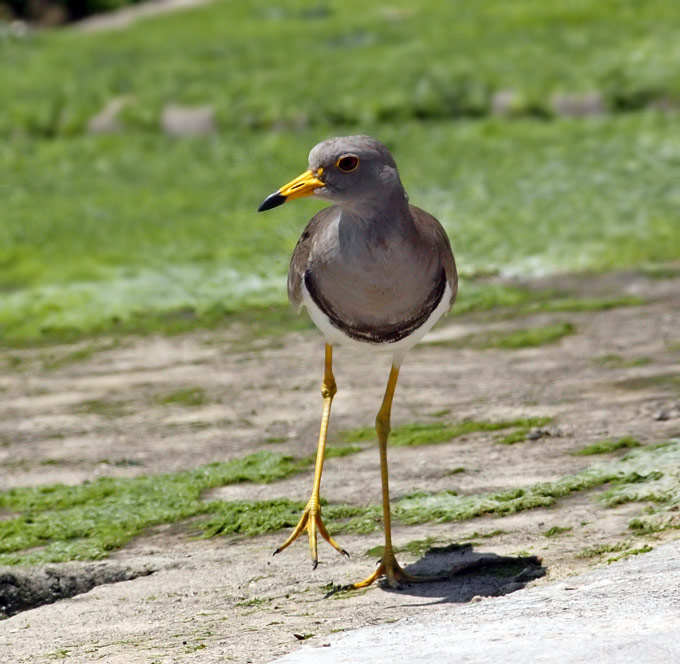

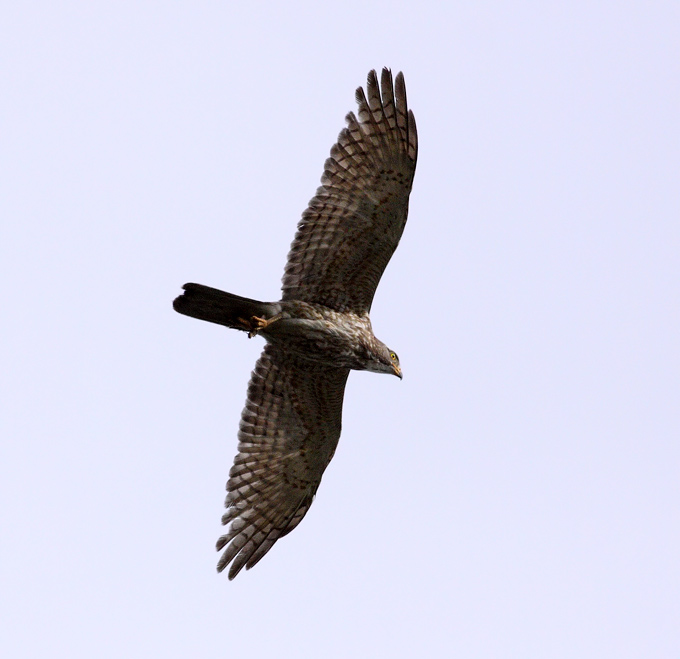

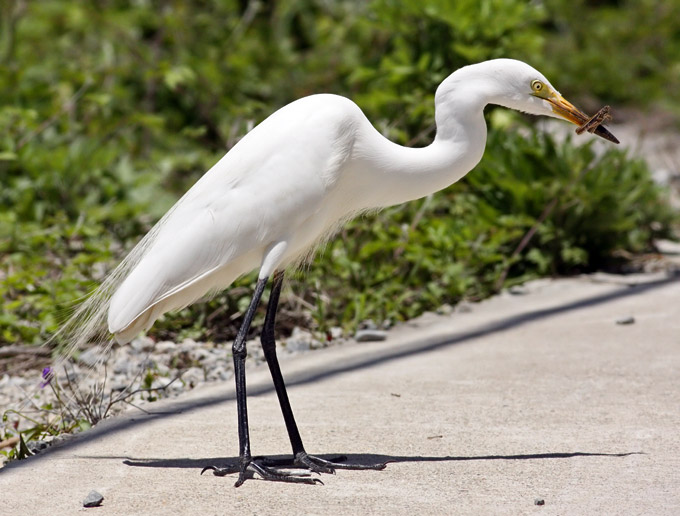
Gageo Island, May 9 (PM)
After a sea crossing featuring a Western Osprey near Heuksan, an overcast afternoon found the island rather devoid of birds with only 43 species noted. Best of these, 2 Light-vented Bulbul and a White-shouldered Starling.
Perhaps due to the watchful eyes of 3 Chinese, 2 Japanese & 1 Eurasian Sparrowhawk, the few passerines in evidence were hid in deep cover: the accipiters themselves have the resident Peregrine Falcon to fear however, which I saw forcing one of the hawks into the ground to escape. One unfortunate oiled Arctic Loon hangs on in the harbor, apparently unable to gain condition and move on. Otherwise in 1-Gu the roll-call was as follows: 14 Black-tailed, 10 Vega & 7 Taimyr Gull: 3 Black-crowned Night & 6 Grey Heron: 1 Little, 1 Eastern Great, 2 Intermediate & 3 Eastern Cattle Egret: 7 Yellow-browed, 5 Japanese Bush & 3 Korean Bush Warbler: 9 leucopsis & ocularis White, 4 Grey and 13 macronyx Eastern Yellow Wagtail: 9 Black-faced, 2 Tristram's, 3 Chestnut & 9 Little Bunting: 8 Red-throated & 1 Richard's Pipit: 3 Brown-eared Bulbul, 1 Mongolian Plover, 1 Great Knot, 1 Red-necked Stint, 1 Common Sandpiper, 9 Barn Swallow, 2 Black-capped Kingfisher, 1 Great Crested Grebe, 2 Ashy Minivet, 2 Siberian Stonechat, 2 Grey-streaked Flycatcher, 5 Chinese Grosbeak, 1 Blue Rock Thrush, 1 Common Moorhen and 4 Japanese White-eye.


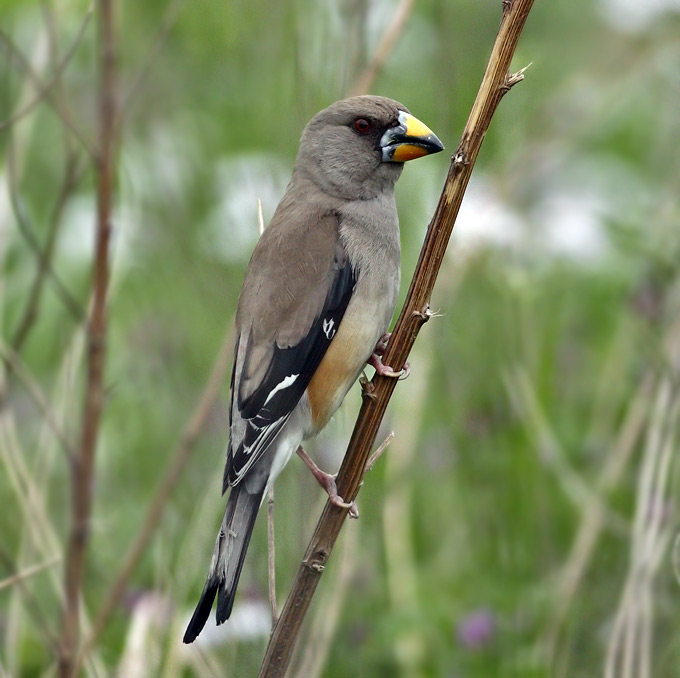
Junam / Dongpan Reservoirs, May 9
Extremely quiet, although a count of 42 Wood Sandpipers on the small marsh south of Dongpan was perhaps noteworthy. On the same marsh, 3 Common Greenshanks, 3 Green Sandpipers and a single Little Ringed Plover. Nearby, a singing Black-naped Oriole was eventually glimpsed in the treetops, while there were at least 6 singing Oriental Reed Warblers in the general area.
Socheong Island, May 8
An odd kind of day, with largely clear skies and few grounded birds in the morning, yet waves of arrivals through the afternoon, with Eye-browed Thrush (ca 750), Chestnut Bunting (ca 750) and Yellow-browed Bunting (ca 175) most numerous. A wide array of spring first’s included Northern Hawk-cuckoo (1), Chinese Sparrowhawk (2), and White-throated Rockthrush (one or two) with further diversity provided by e.g. single Rufous-bellied Woodpecker and Japanese Waxwing.
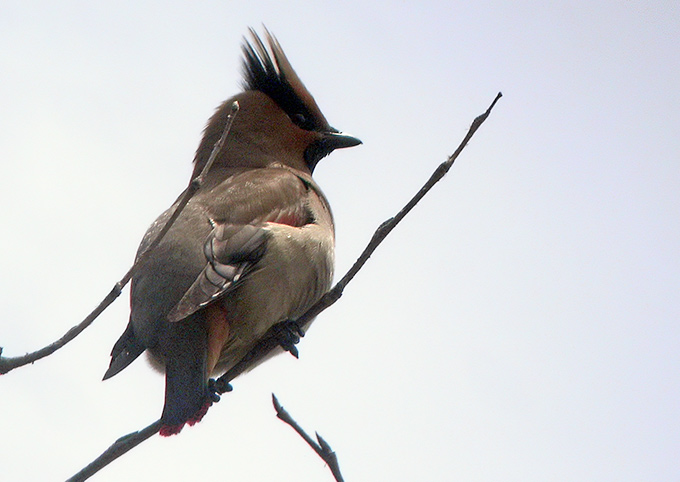
Socheong Island, May 7
Survey of the whole island found 97 species, with island-spring firsts of Common Cuckoo (1) and Grey-streaked Flycatcher (3), and obvious highlight Socheong’s first Pied Wheatear. Found at 0550, the bird gave a few song phrases, sunned itself atop “The Bush” and then within a few minutes headed off strongly north out over the sea. Other highlights included two red male Common Rosefinch, an increase in warblers (with one Hume’s, 32 each of Pallas’s and Radde’s and 153 Yellow-broweds), and an owstoni-type female-type Narcissus Flycatcher. Looking short-tailed and heavy-billed (with a paler base), the most striking feature was the yellowish tones to the throat, with yellowish streaks also just visible on the breast and flanks.
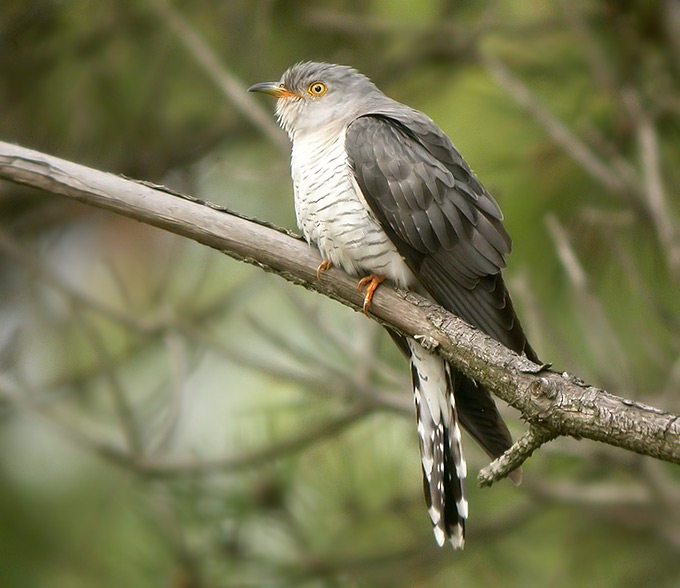
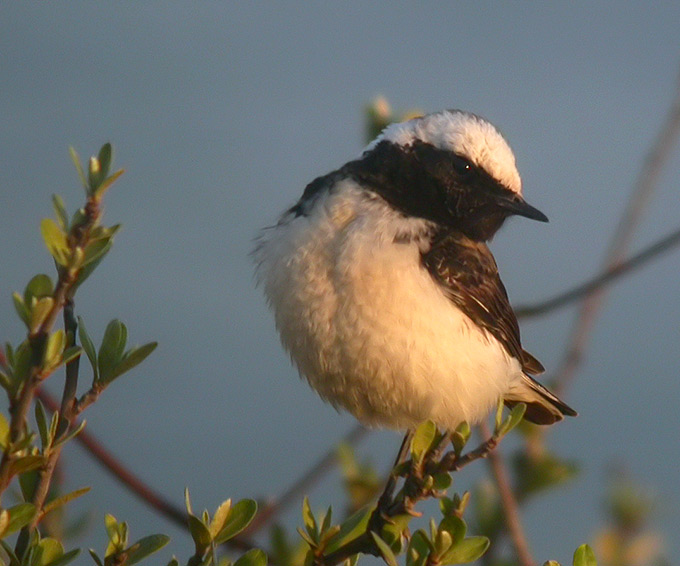
Mungab Island, May 7
A House Crow had been found by Song In-Sik and Won Chong-Un (Incheon Birds), and had been well photographed by several observers - a new first for the ROK.
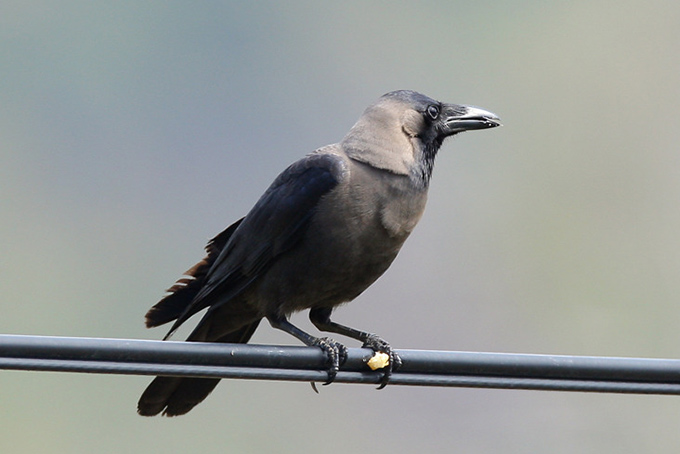
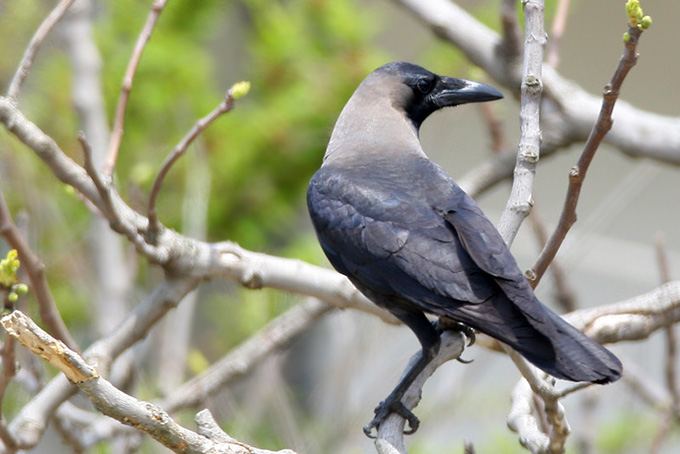
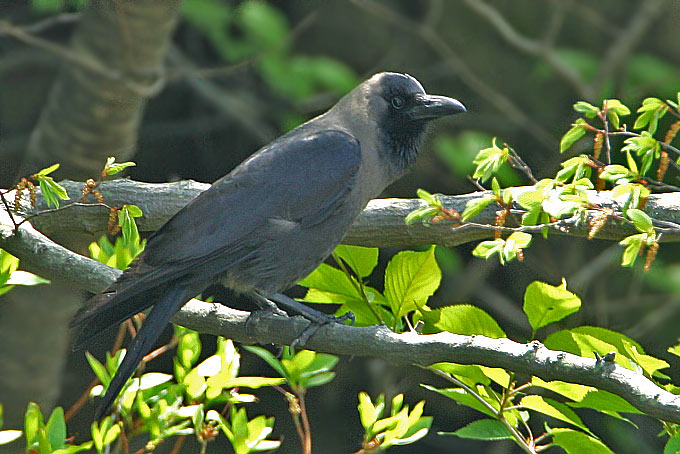
Yeongam, May 7
On a drive home throught the countryside in the late afternoon showed a few interesting birds. At first an Oriental Dollarbird showed just long enough to be seen and to make a picture. More time gave two Common Kestrel, one with sitting on a wire and the second by howering high in the sky. Also seen were 8 Wood Sandpiper with a single Common Greenshank in a rice field as well as 6 Cattle Egret moving along a stream. The biggest surprise was a cat carrying an Eurasian Magpie over a field while a second Magpie followed the cat with some distance.
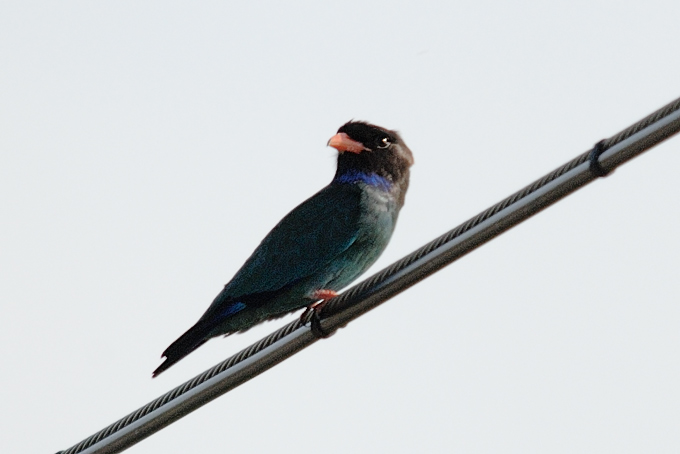
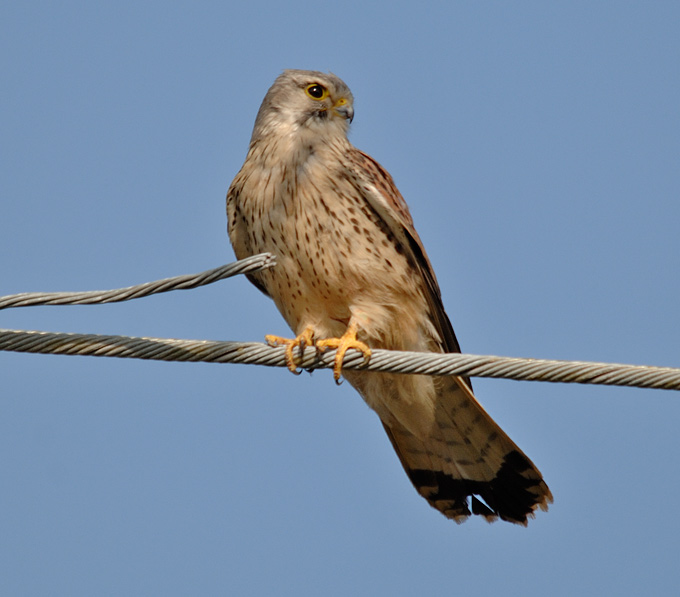


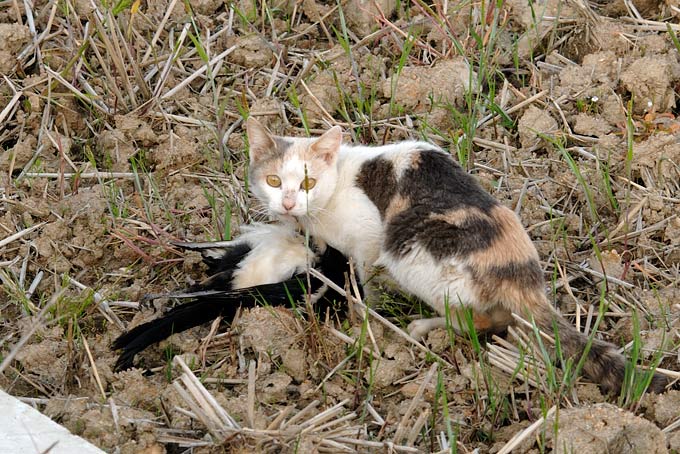
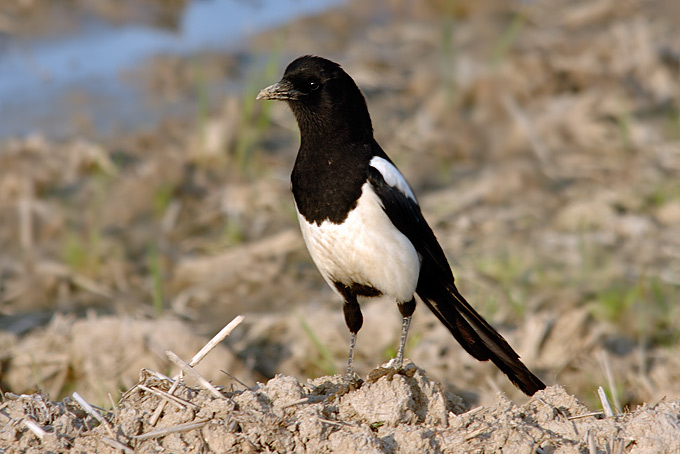
Ganseong area, May 5
Today being Children's Day public holiday, I thought I should have a look at the birds around Ganseong. I took my usual circuitous route down Nam Cheon to the coast, then north to Buk Cheon and upstream to the hills and back home through Ganseong Eup to Samik Apartments near Nam Cheon where I live.

Eastern Yellow Wagtail Motacilla tschutschensis,
Photo © Barry Heinrich
On and around one of the sand islands in Nam Cheon there were lots of birds. These included 3 Black-winged Stilts, a Common Greenshank, 2 Common Sandpipers, 2 Sharp-tailed Sandpipers, 22 Eastern Yellow Wagtail (including subspecies Motacilla tschutschensis tschutschensis and M. t. taivana), White Wagtails (Motacilla alba ocularis), Buff-bellied Pipits, Olive-backed Pipits, Red-throated Pipits and a pair of Little Ringed Plovers mating. There were Spot-billed Ducks, 5 Tufted Ducks, 2 Little Grebes, a male Mallard, a female Common Teal and a Great Egret nearby. A Striated Heron flew over the island.
Other birds in the general area included Black-faced Buntings (Emberiza spodocephala Spodocephala), Little Buntings, Siberian Stonechat, Barn Swallows, Tree Sparrows, Grey Wagtail, Japanese Wagtail, Oriental Reed Warbler, Korean Bush Warbler, Eastern Crowned Warbler, 5 Grey-tailed Tattlers, Green Sandppiper, Common Snipe and Pale Thrush. Before I got to the coast a Common Cuckoo flew along the creek. A Common Kestrel was harassing a Peregrine Falcon and there were a couple of Grey Herons around too.
On the sea there were still a lot Loons, more than 50 that I could see, including Black-throated Loons and Red-throated Loons. There were also Red-breasted Mergansers, White-winged Scoters, Great Crested Grebes, Great Cormorants, Black-tailed Gulls and Vega Gulls.
In the lower reaches of Buk Cheon I saw 2 Red-throated Loons and a oiled Black-throated Loon. There were Spot-billed Ducks, Eurasian Wigeons, Northern Shovelers, a Mandarin Duck, a Little Grebe and Black-tailed Gulls. There was a Pacific Golden Plover on the back of the sandbar as well as Little Ringed Plovers, White Wagtails, a Black-billed Magpie and a Large-billed Crow. Two Eastern Crowned Warblers flew down from the razor-wire on the security fence to some cover. There was a Far Eastern Lark, Dusky Thrushes, Common Kingfishers, a Tristram's Bunting, Black-faced Buntings and Little Buntings nearby.
Dusky Thrushes, Black-faced Buntings and Little Buntings were seen all the way along Buk Cheon. There was plenty of activity at the breeding site of Grey Herons and Eastern Great Egrets. They were also seen along Buk Cheon and in the nearby farmland. I found 6 Tufted Ducks before I got to the main road.
Upstream from the main road I added Falcated Teal, Common Kestrel, Siberian Stonechats, Pale Thrushes, Oriental Turtle Doves, Olive-backed Pipits, a Richard's Pipit, Barn Swallows, Grey Wagtails, Japanese Wagtails and Green Sandpipers to the list of birds I had already seen along Buk Cheon. Around the edge of the forest on the edge of the hills I found a couple of White's Thrushes, several Pale Thrushes and a Little Cuckoo.
It was a very good morning of birding.
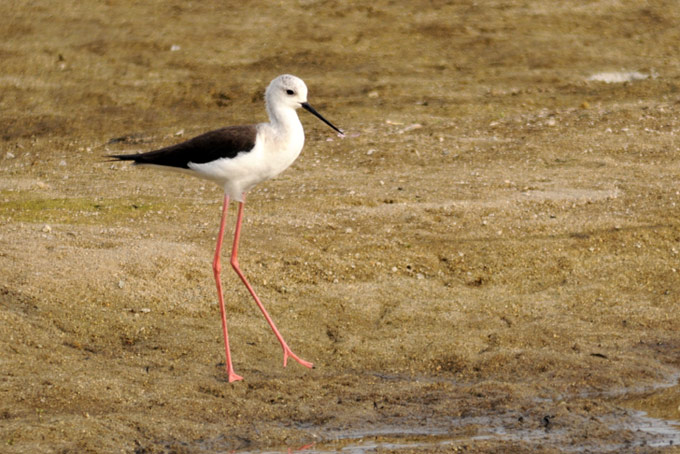
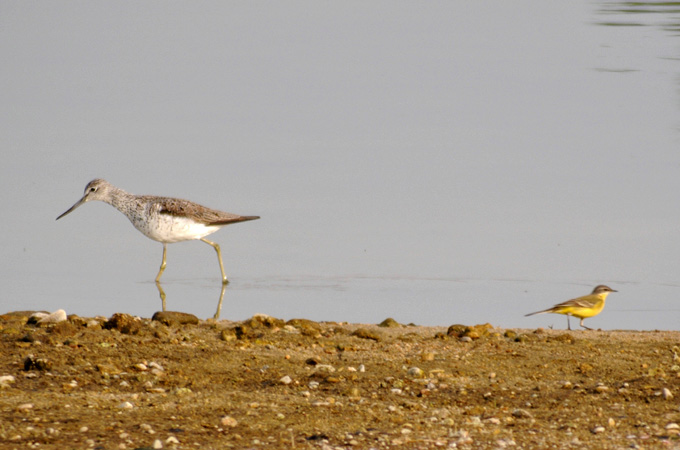
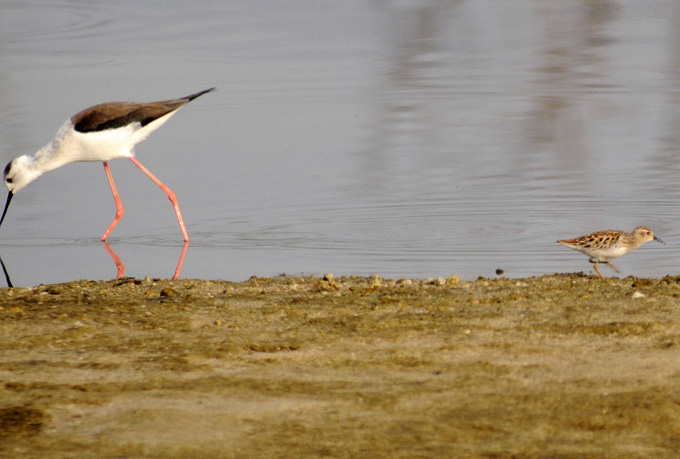
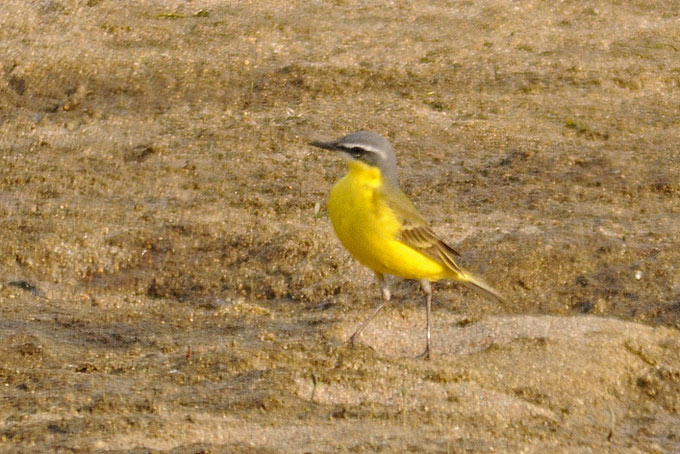
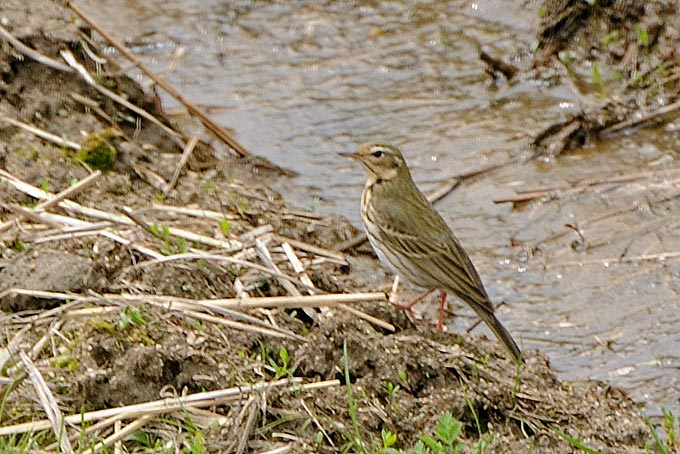

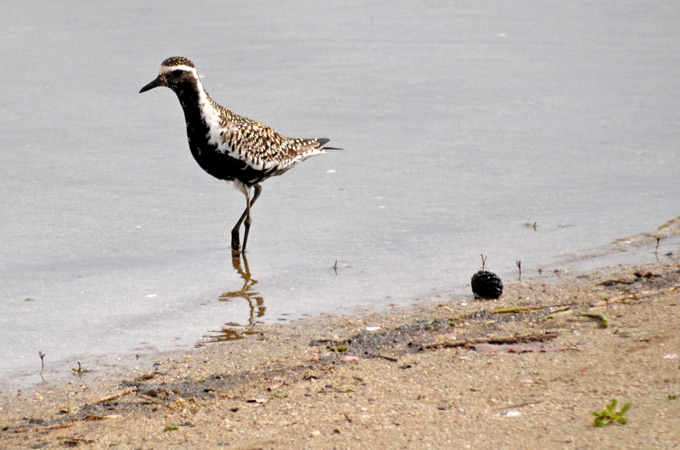

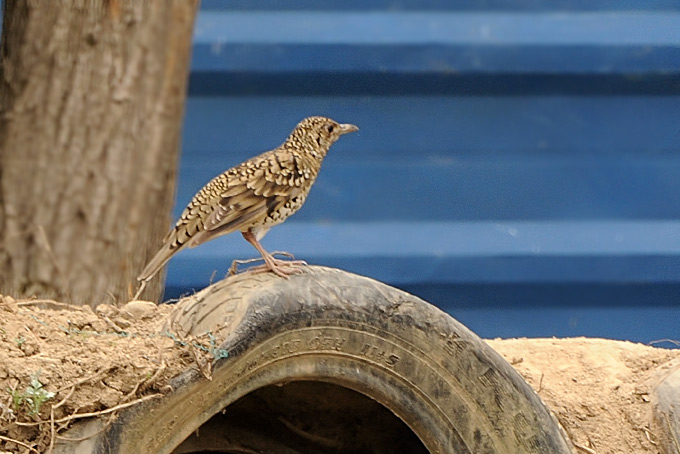
Gageo Island, May 3
In the morning before the boat, The Daurian Starling in the quarry still, a Japanese Quail above the quarry; highlight was an Oriental Plover, presumably the same bird discovered by T.E. several days previous. Only minutes before the boat, a Grey Thrush near the minbak and 2 Pacific Swifts over the village.
The return boat trip was eerily birdless; even gulls were mostly absent; a few hours out, we entered heavy fog which lasted well toward Mokpo – so nothing more to tell.
Socheong Island, May 3
No (or at very most only a few spots of) rain overnight: instead dense fog which persisted all day and a wind that shifted to SE. Survey of the west of the island and of North Point nonetheless still turned up 72 species (though most in apparently reduced numbers), with highlights including an Oriental Pratincole on the beach, 4 Chinese Blackbird, single Japanese Quail, Black-capped Kingfisher and Radde’s Warbler (all firsts of the spring on Socheong), another Hume’s Leaf Warbler, and best of all Socheong’s second ever Tree Pipit (the last being in October 2005) – feeding in the same field as yesterday’s Black-throated Thrush.
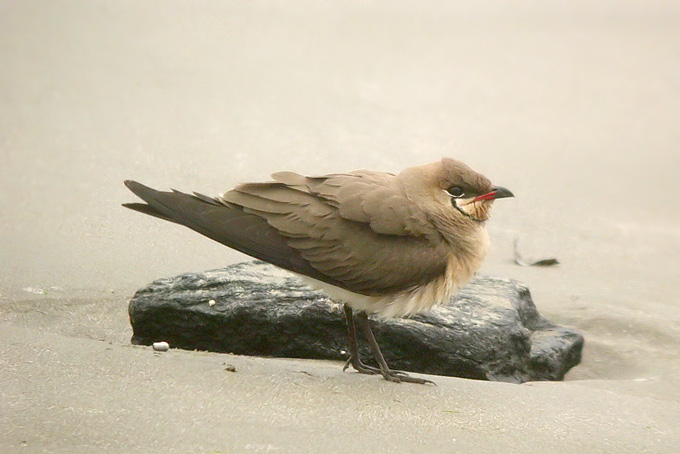
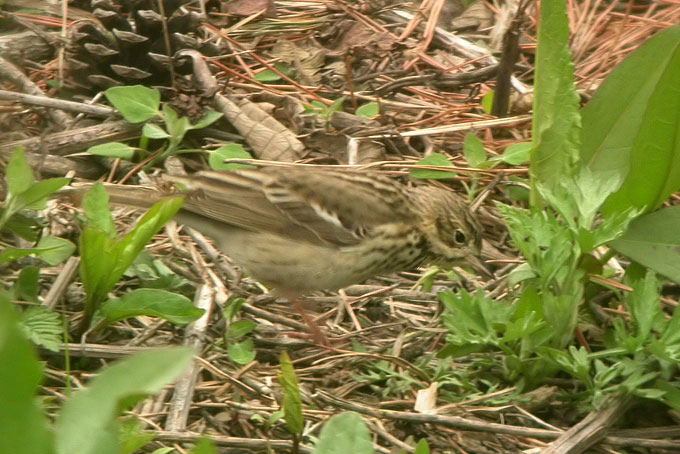
Busan, May 3
At a misty Taejongdae once again, on the trail of a Japanese Night Heron reported here two days earlier. There was however no sign of the elusive migrant, so I was left to look at far more common creatures such as a Siberian Chipmunk (Tamias sibiricus), Jay and my first Oriental Honey Buzzard of the spring.
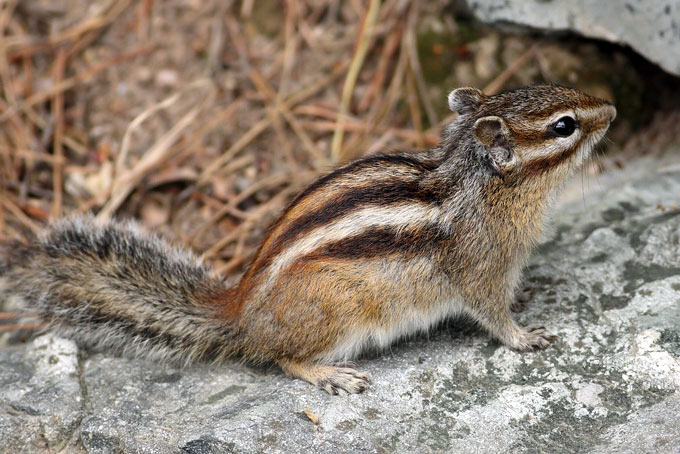
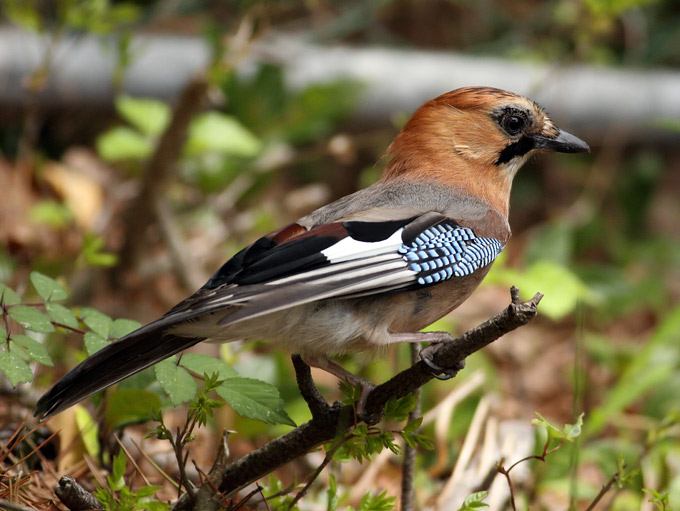
Gageo Island, May 2
Sunshine in the morning overtaken by sudden and heavy fog, especially in the lower elevations. New birds in the main village were a Common Kingfisher, a Siberian Rubythroat and a Long-toed Stint. No less than 3 White-breasted Waterhens congregated near the trash tip; these were joined by a Cattle Egret and a Blue Rock Thrush. For the afternoon I took the long walk (with only a landscape lens) through alternating fog and sun to 2-gu. Several Narcissus Flycatcher types showed: one in particular suggested features of Elisae (or perhaps more so) Owstoni-types: a bluntish bill, rather short primary projections, distinctly greenish upperparts, white-wing patch, some suggestion of darker ear-coverts, strong yellow underparts, and a two-toned eye-ring – yellowish on top and white on bottom.
Also along the way: a male Tricoloured Flycatcher, a few Bramblings, several Chinese Pond Herons, the season’s first Broad-billed Roller and Pechora Pipit, a pair of Grey-faced Buzzards, several Pale Thrushes, small numbers of Yellow-browed, Dusky, Pale-legged Leaf and Eastern-crowned Warblers, and several Japanese Whiteyes. Highlight was a distant flight view, a very close perching view, and (best of all?) the tiger-croonings of Black Wood Pigeons.
At 2-gu, the village itself sat in clear sunshine, but was almost entirely devoid of birds; the lower reaches and the western headland were covered with very heavy fog. I ventured into the fringes and found 2 Japanese Quail and a Radde’s Warbler but very low visibility sent me back.
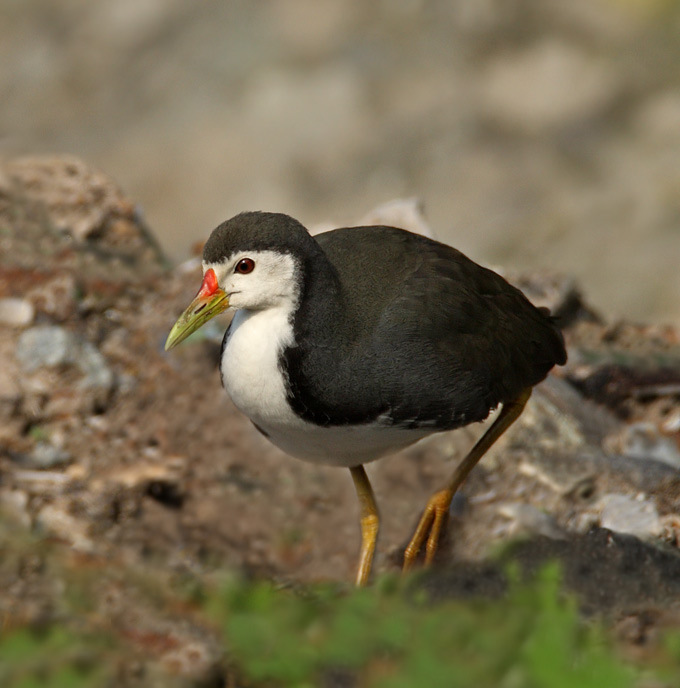


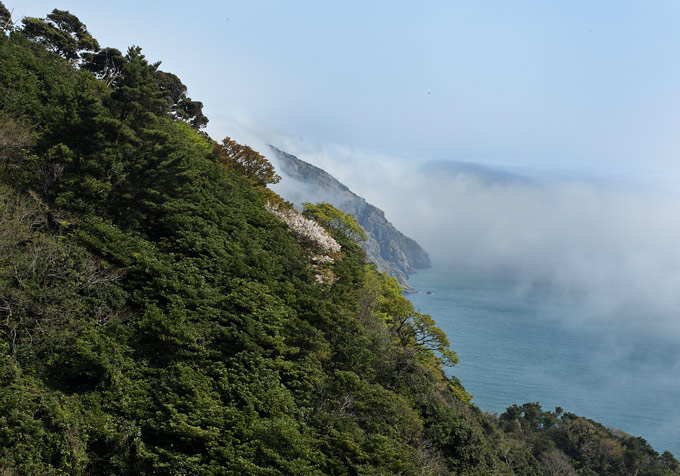
Socheong Island, May 2
The day started with a very quiet viz-mig hour in cold southerlies and heavy haze (reducing visibility below 10km), followed by survey of the west of the island with highlights of a Second Calendar-year male Black-throated Thrush, Socheong’s first Dollarbird of the spring, and an adult male Black Redstart (first seen briefly on April 30th’s). Other species of note during an increasingly misty afternoon were two Hume’s Leaf Warbler and three male Yellow-bellied Tit, with one or more even singing.
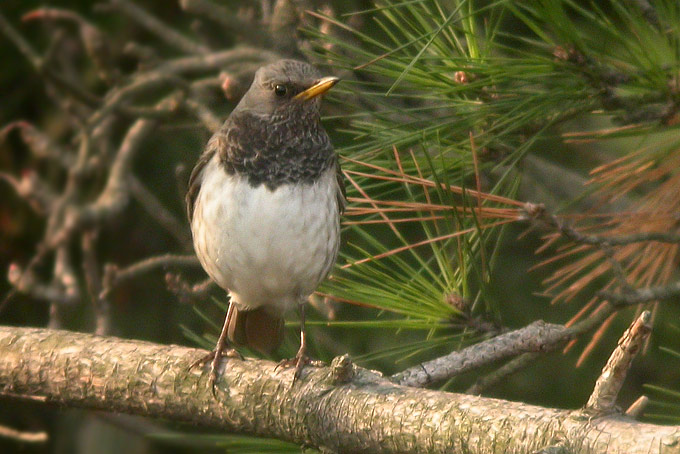
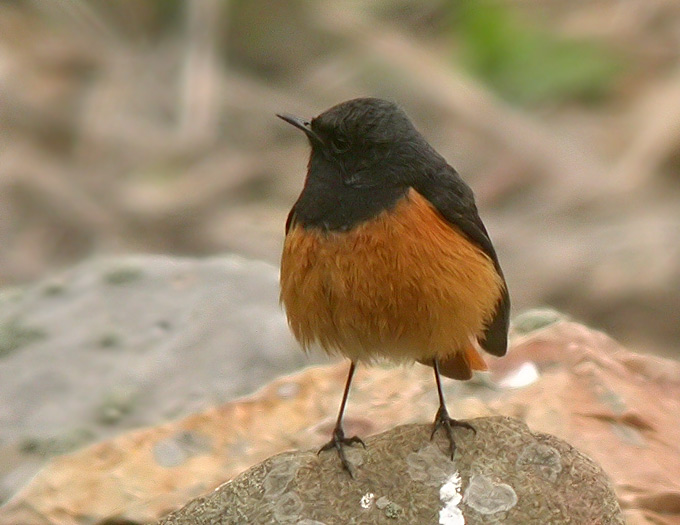
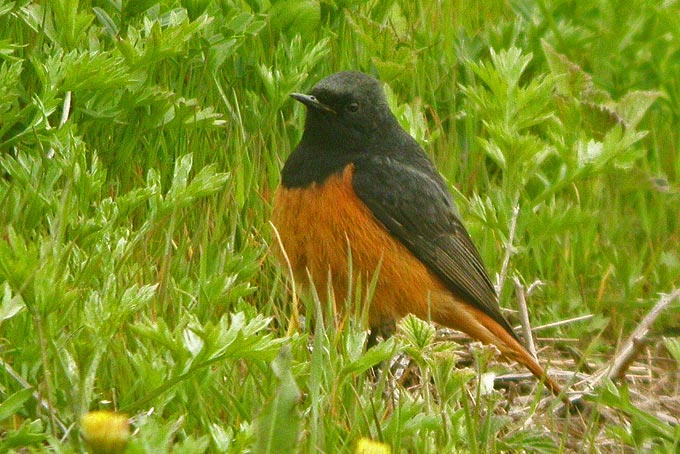
Mokpo Namhang Urban Wetland, May 1 & 2
At Mokpo's Namhang wetland on May 1st and 2nd (dusk & dawn respectively), Mr Andreas Kim showed me to the visiting celebrity American Wigeon, which turned out to be exceedingly camera-shy, keeping his distance when in good light and only moving closer when in shade. 40 species here also included e.g a Curlew Sandpiper, 67 Bar-tailed Godwit, several Great Knot, a Common Kingfisher and more seasonal firsts such as Spotted Redshank and Little Tern.
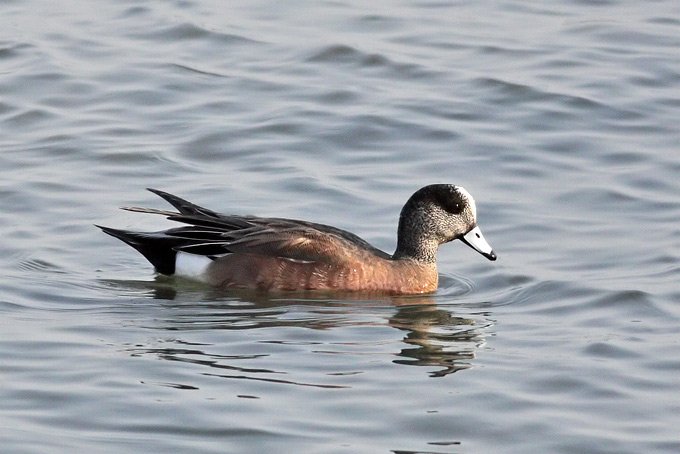
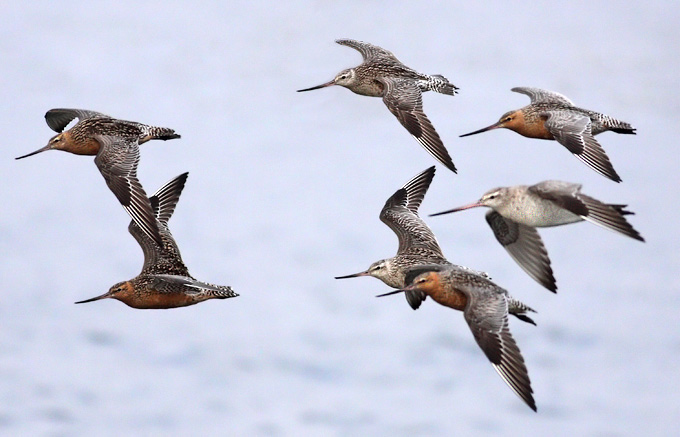

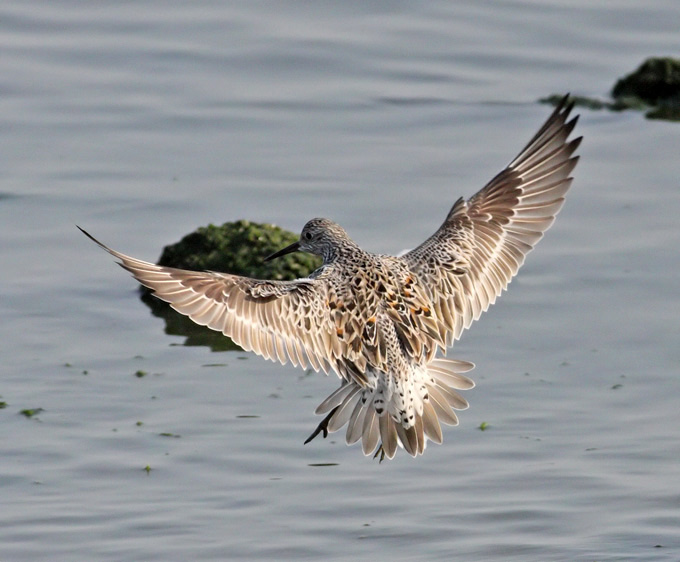
Ganseong x coastal plain, creek and sea, May 1 & 2
I wasn't up for a lot of travel this weekend but I needed to get out for a while, so on Saturday morning May 1st I walked down along Nam Cheon to the coast and back. I wasn't expecting a lot, but it turned out to be a very worthwhile bit of exercise.
As I walked down the hill past the farms I found Hawfinches and Bramblings in the grapevines. On the flood bank of the creek there were Dusky Thrushes, Buff-bellied Pipits, Eurasian Magpies, Siberian Stonechats, Black-faced Buntings Emberiza spodocephala spodocephalaand White Wagtails Motacilla alba ocularis. On the sand and gravel banks along thecreekthere were more White Wagtails, a Japanese Wagtail, a Grey Wagtail, Yellow Wagtails Motacilla tschutschensis tschutschensis, Buff-bellied Pipits, Red-throated Pipits, Little Ringed Plovers, Common Sandpipersand a Terek Sandpiper.
There were Spot-billed Ducks, Tufted Ducks and Little Grebes in the water. Above the water flying around were lots of Barn Swallows, and with them I saw a Fork-tailed Swift and a Red-rumped Swallow. In the flooded rice fields south of the creek I found 3 Common Teal and some Common Snipe. There were some Common Kingfishers on one of the weirs and a Kentish Plover on a gravel bank down near the coast. A couple of Grey Herons, 2 Little Egrets, an Eastern Great Egret and a Common Kestrel were also seen.
Off the beach I could see a few Red-breasted Mergansers, Black-tailed Gulls and Great Cormorants.
I went to visit friends at Gajin, the small village on the coast just south of Ganseong, for lunch on Sunday. There were 2 Great Crested Grebes in the bay there. On the rocks I saw a couple of Blue Rock Thrushes and a couple of Brown-eared Bulbuls visited the outdoor table looking for food scraps.
Revisiting Nam Cheon Sunday afternoon, May 2nd. I found a Bar-tailed Godwit behind the sandbar at the mouth of the creek. The Kentish Plover was still around. I saw the first Striated Heron for the year near one of the weirs. Along with the other pipits I saw an Olive-backed Pipit. There was a male Northern Shoveler and a male Mallard on the water in the creek. A Great Egret was walking along the edge of the grass looking for food. A Great Cormorant was resting beside the water. And along with the Black-faced Buntings I saw 3 Little Buntings.
Without going very far, I managed to have do a bit of good birding over the weekend.
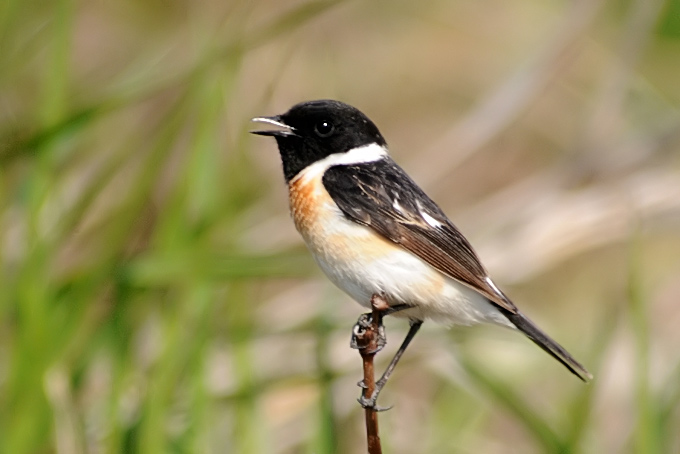
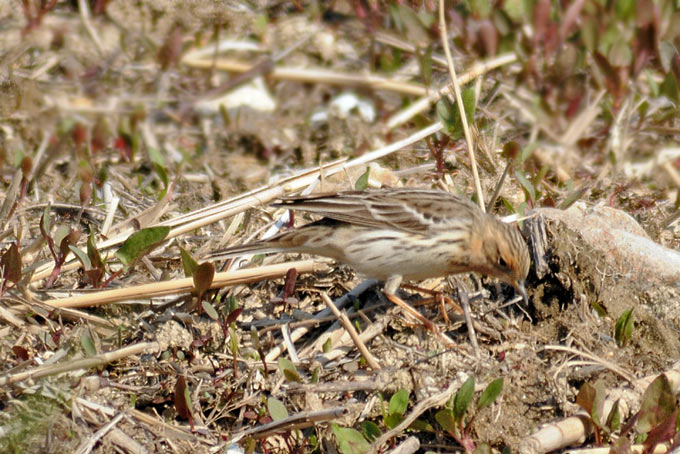


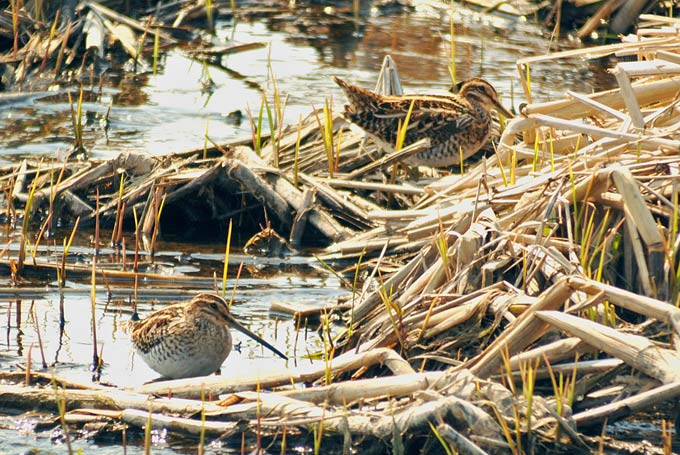
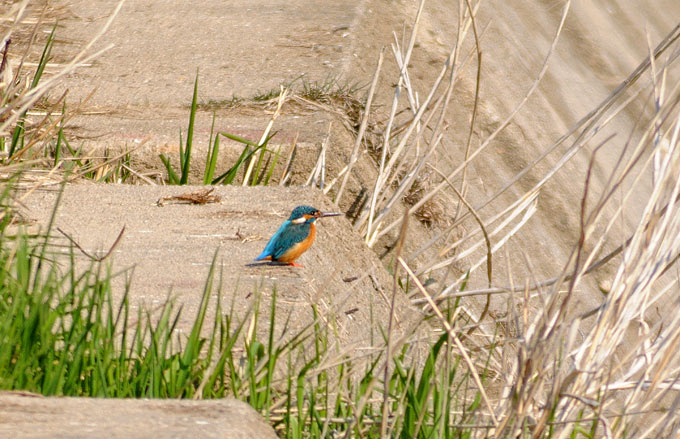
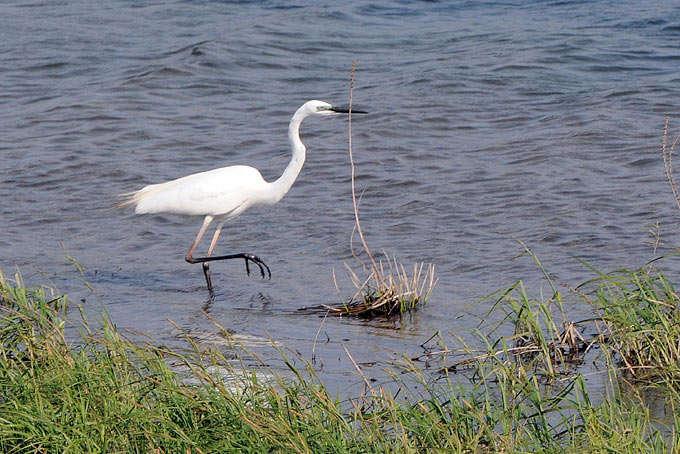
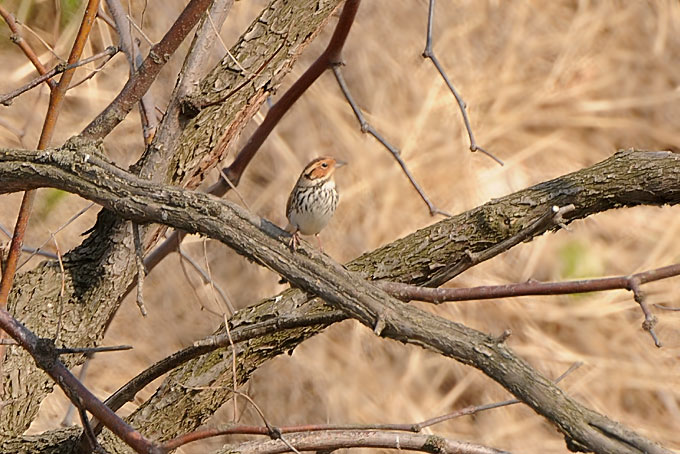
North of Mokpo, May 2
In a corner of a field a flock of 15 Wood Sandpiper along with a single Litte Ringed Plover, in the adjacent vegetation lively Treesparrows and Vinous-throatedParrotbills.
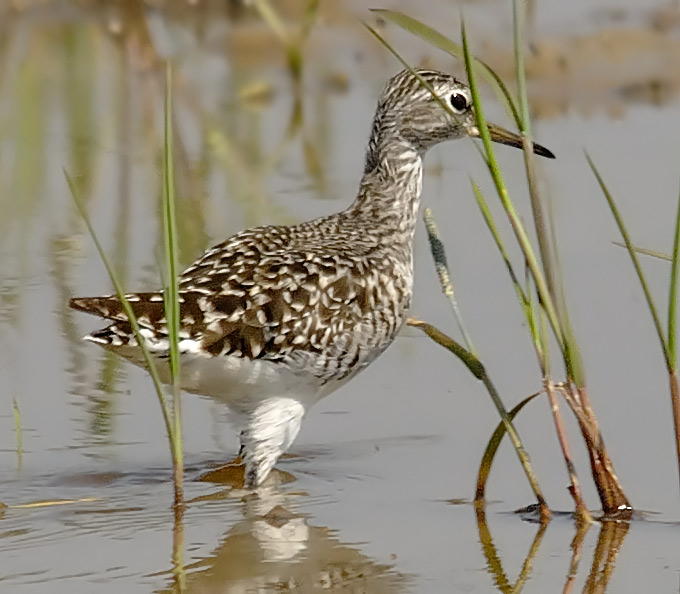
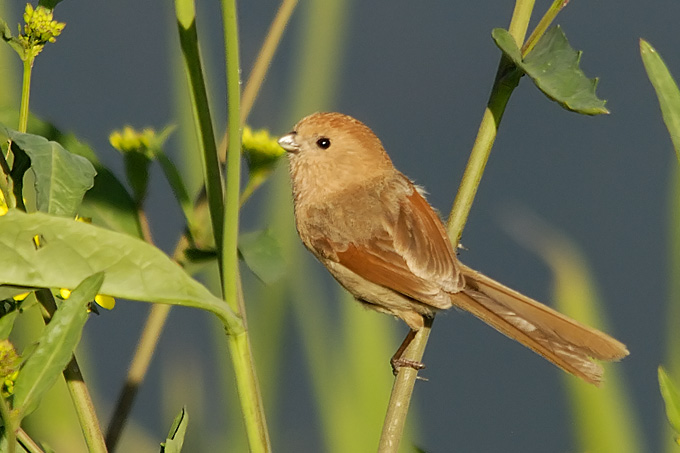
Gageo Island, May 1
Few new birds, and smaller numbers overall: warblers similar to the day previous with the addition of a few Asian Stubtails. A Siberian Blue Robin in the gully and a Daurian Starling in the quarry. Good numbers of wagtails including 2 taivana Yellow and several Grey Wagtails. A Sharp-tailed Sandpiper, a Common Greenshank , a Kentish Plover and a Great Knot on the mossy slab.
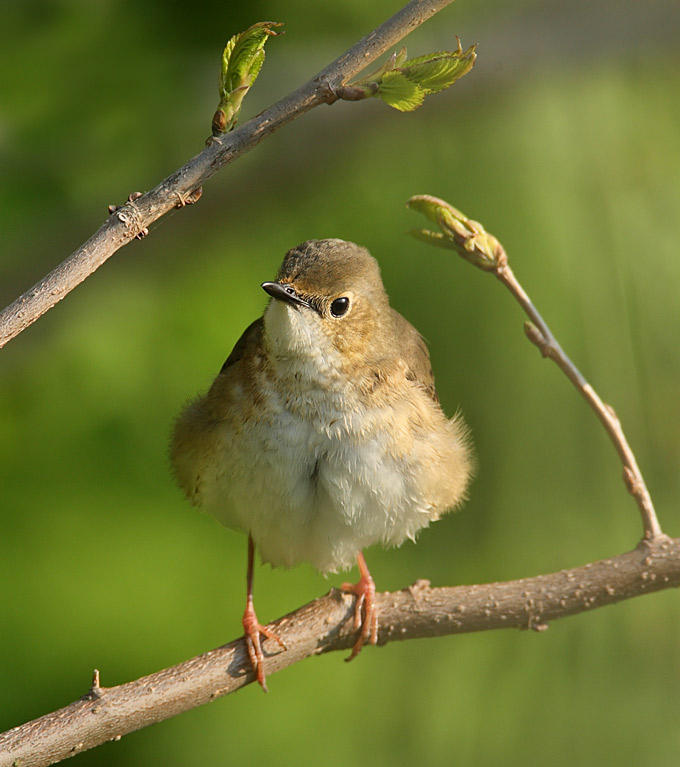
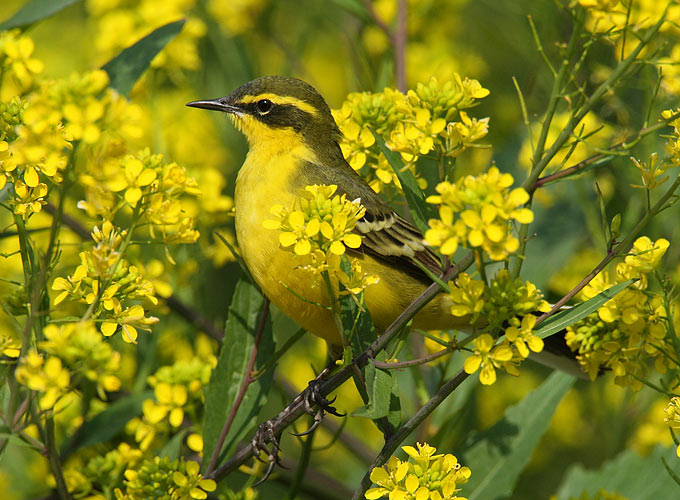
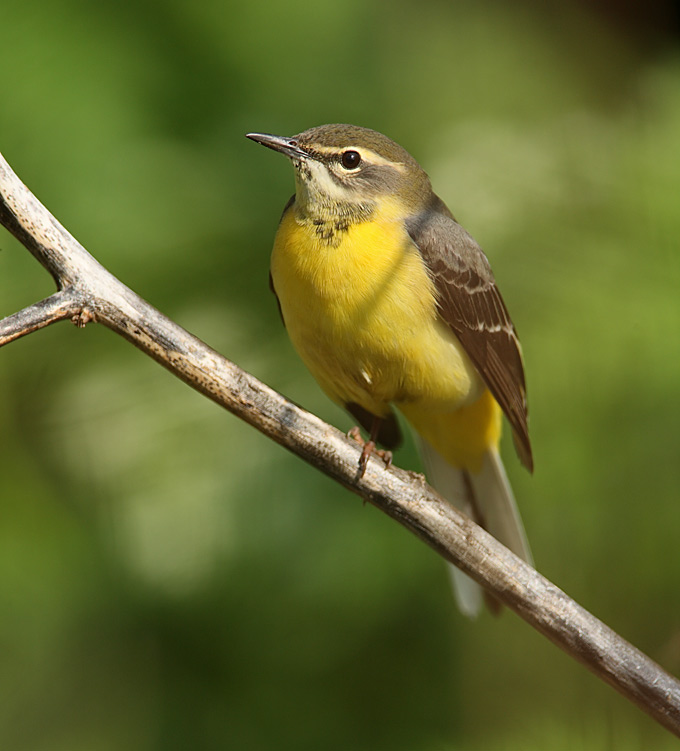
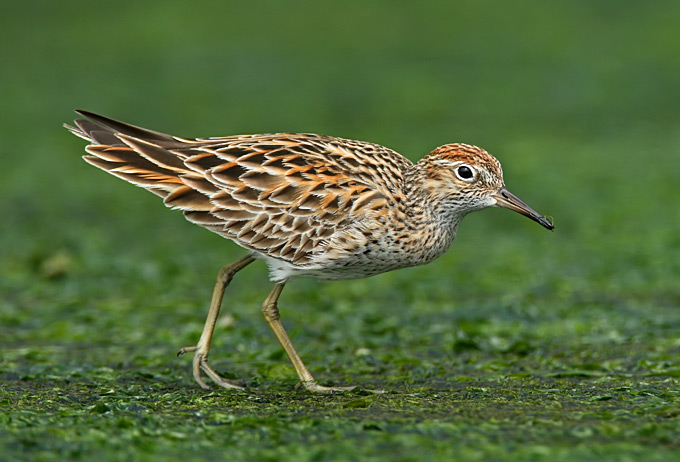
Socheong Island, May 1
Survey of the east of the island found 81 species with 17 simplex Japanese White-eye (split up in three groups) the species of most note. Simplex show several very obvious differences from japonicus, including size (being obviously smaller), more yellow-green upperparts and much cleaner off-white underparts, head pattern (yellow forehead, subtly darker band on forecrown, and stronger black loral line extending to below the eye) and also calls, sounding rather thicker and buzzier. Other species of interest in the east included another White-breasted Waterhen, two Grey Nightjar, a red male Common Rosefinch and a fly-by male presumed Citrine Wagtail, two Bluethroat in the main village and according to a visiting birdwatcher probably 40 Siberian Blue Robin in the west of the island.

Suncheon Bay, May 1
A sunny but breezy spring day at Suncheon. Despite the sea of cars and tour buses in the car park, and the army of people on the reedbed boardwalk, once we were away from the visitor centre area there was hardly anyone at all along the raised path leading out toward the mudflats of the bay. In the reeds and bushes, large numbers of Chinese Penduline Tit (perhaps 100 or more) were seen and heard. There was an intermittently singing Oriental Reed Warbler in a reedy ditch near the visitor centre that revealed nothing more of itself than brief flight views - I expect it was feeding actively after its long migration and keeping low down in the vegetation in the windy conditions. A single Pallas's Reed Bunting and two Black-faced Buntings were seen, and most intriguingly a bunting seen in flight that showed a bright warm buff rump and uppertail as it dived for cover in the reeds, this bird most likely an Ochre-rumped Bunting.
There were plenty of waders on the mudflats, but they were mostly distant as the tide was fairly well out. Grey Plover, Kentish Plover, Bar-tailed Godwit, Whimbrel, Far Eastern Curlew, Common Greenshank and Terek Sandpiper were all seen in varying numbers, with Whimbrel and Terek Sandpiper seemingly the most numerous of these. A single Common Sandpiper and a single Spotted Redshank were also seen. Meanwhile, on an area of flooded rice paddy, 27 Black-tailed Godwits were feeding, with 8 Pacific Golden Plover and 6 Sharp-tailed Sandpiper at the muddy margins of the same flood. Also seen, a pair of Little Ringed Plover which frequented a (soon to be developed?) area of waste ground near the visitor centre, with the male seen performing a display flight.
Jeju island, May 1
The first genuinely hot and sunny day of the spring. In Seogwipo, a Grey-backed Thrush skulked in the underbrush on the far bank of a stream. Several Asian Brown Flycatchers have returned to the park. No sign of the Asian House Martins from earlier in the week. On the Southwest coast, farmer's field were busy with migrants and visitors. A Common Snipe, and a Long-toed Stint with strong chest markings fed in a flooded field alongside 4 Sharp-tailed Sandpipers. Three pairs of Garganey remain nearby, along with several Eurasian Teal. A dozen Eastern Yellow Wagtail also shared this field. About a dozen Black-winged Stilt, and a Curlew Sandpiper were seen in nearby fields. I spotted a Chinese Pond Heron here earlier in the week. In a nearby grassy field, we were greeted by the impressive sight of several small flocks of Little Whimbrel taking off together, forming a flock of at least 40 birds. A treat to watch was 2 female Amur Falcons swooping low over the same field, feeding on insects. One male Amur Falcon was also seen. A (late?) Eastern Buzzard and a Kestrel also patrolled nearby fields.
Further up the coast an Osprey caught a fish in a tidal pool right at our feet, and was then harried by a Eurasian Magpie. Best for the day was probably a Whiskered Tern. It was spotted in the same artificial pond where a Citrine Wagtail was spotted a few weeks ago, where it sat on a rock, clearly too exhausted to move. Also spotted this day were several Blue Rock Thrush, Pacific Reef Heron, Common Kingfisher, Meadow Bunting, and abundant Barn Swallows at all locations.
At Hamo beach, several Black-throated Loons drifted offshore, and interestingly one of them was in summer plumage, while the rest remained in winter plumage. At an oreum near the coast, several Dark-sided, Grey-streaked, and Asian Brown Flycatchers were all represented in a hilly thicket. The bushes were alive with active Eastern Crowned and Arctic Warblers, as well as a half dozen or so Brown-headed Thrush. Overhead, 2 Oriental Dollarbirds performed aerobatics, and called noisily and corvid-like from the trees.
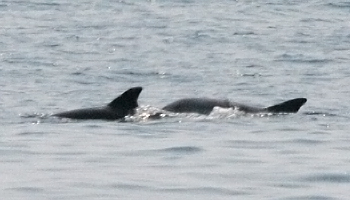
Young-Ho informed me that he had seen both a Japanese Night Heron and Purple Heron earlier in the week, but unfortunately we couldn't relocate either of these birds. Several Grey-tailed Tattler and 5 Terek Sandpiper foraged on shore rocks, while about 8 Short-beaked Common Dolphins moved past, close to shore.
At Hwasun beach, some disturbing habitat loss. A small reedy wetland at the mouth of a stream that fed into the ocean has been halved by an ever-expanding concrete construction/storage sprawl. The stream has been completely diverted. The reeds and surrounding area was formerly home to a wide array of egrets, herons, reed warblers, and plovers, among others species, but there were no birds there in evidence today.
